How many days with a fever before seeing a doctor. When to Seek Medical Attention for Fever: Expert Guidelines and Home Care Tips
How long should you wait before seeing a doctor for a fever. What are the signs of a high-grade fever that requires immediate medical attention. How can you effectively manage low-grade fevers at home.
Understanding Fever: Your Body’s Natural Defense Mechanism
Fever is a common physiological response that often causes concern, especially in parents. But what exactly is a fever, and why does our body temperature rise? A fever occurs when the body’s internal thermostat raises the core temperature above its normal range, typically as a defense mechanism against infections.
The average body temperature for humans hovers between 97°F and 99°F (36.1°C to 37.2°C). When this temperature rises above 100.4°F (38°C), it’s generally considered a fever. This increase in body temperature creates an environment that’s less hospitable for invading pathogens, effectively aiding the immune system in its fight against infection.

Types of Fevers: Low-Grade vs. High-Grade
Fevers are typically categorized into two main types:
- Low-grade fever: Body temperature between 100.4°F (38°C) and 102.2°F (39°C)
- High-grade fever: Body temperature above 102.2°F (39°C)
Understanding the distinction between these types can help determine the appropriate course of action and when medical attention might be necessary.
Managing Low-Grade Fevers: Home Care Strategies
Low-grade fevers often don’t require medical intervention and can be managed effectively at home. Here are some strategies to help alleviate discomfort and support the body’s natural healing process:
- Rest: Encourage plenty of sleep and relaxation to allow the body to focus its energy on fighting the infection.
- Hydration: Increase fluid intake to prevent dehydration and help regulate body temperature.
- Cool compresses: Apply a cool, damp cloth to the forehead, wrists, or back of the neck to provide comfort.
- Dress appropriately: Wear lightweight, breathable clothing and use a light blanket to avoid overheating.
- Maintain a comfortable room temperature: Keep the environment cool but not cold.
Is medication necessary for low-grade fevers? In most cases, low-grade fevers don’t require medication. However, if the fever is causing significant discomfort, over-the-counter fever reducers like acetaminophen or ibuprofen can be used under the guidance of a healthcare provider.
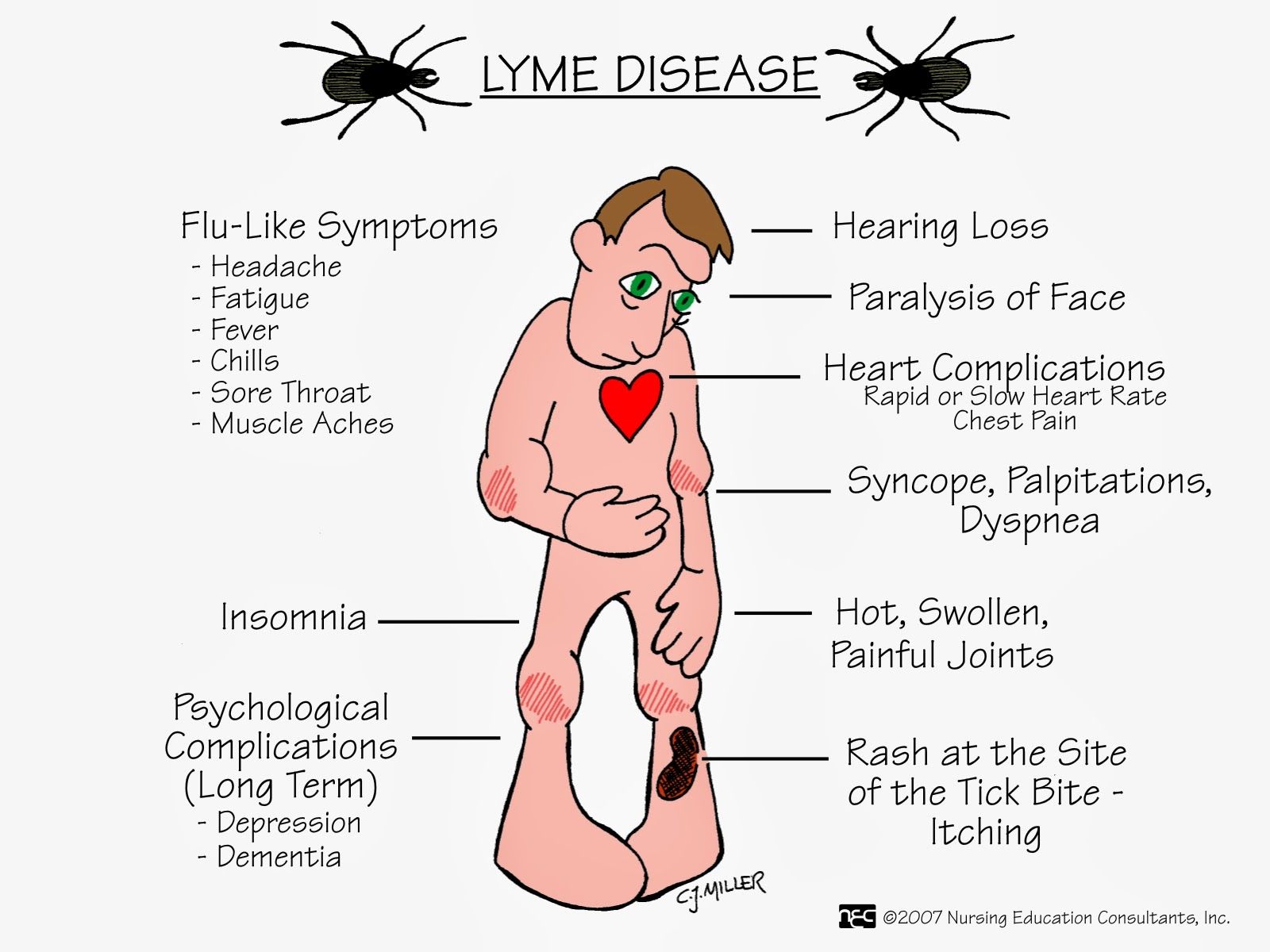
High-Grade Fevers: When to Seek Medical Attention
While low-grade fevers can often be managed at home, high-grade fevers may require medical intervention. But how can you determine when it’s time to see a doctor?
Red Flags: Symptoms Warranting Immediate Medical Attention
Certain symptoms accompanying a fever should prompt immediate medical evaluation:
- Temperature of 104°F (40°C) or higher
- Fever lasting more than 72 hours (or 24 hours in children under 2)
- Severe headache or neck stiffness
- Confusion or altered mental state
- Difficulty breathing or chest pain
- Persistent vomiting or inability to keep fluids down
- Seizures or convulsions
- Rash that doesn’t blanch when pressed
Do these symptoms always indicate a serious condition? While these symptoms can be associated with severe illnesses, their presence doesn’t necessarily mean a dire situation. However, they do warrant prompt medical evaluation to rule out potentially serious conditions and ensure appropriate treatment.

Special Considerations for Infants and Young Children
Fevers in infants and young children require special attention due to their developing immune systems and inability to communicate symptoms effectively. Parents and caregivers should be particularly vigilant in these cases.
When to Call the Doctor for a Child’s Fever
For children, the following scenarios necessitate contacting a healthcare provider:
- Infants under 3 months with a rectal temperature of 100.4°F (38°C) or higher
- Children 3-6 months with a temperature above 102°F (38.9°C)
- Any child with a fever lasting more than 72 hours
- Fever accompanied by other concerning symptoms like lethargy, severe pain, or difficulty waking
How quickly should you seek medical attention in these cases? For infants under 3 months with a fever, immediate medical evaluation is crucial. For older children, contact your healthcare provider for guidance on whether immediate care is necessary or if home management is appropriate.
Fever Reduction Techniques: Do’s and Don’ts
While managing a fever, it’s important to know which techniques are helpful and which could potentially be harmful. Here’s a quick guide to fever reduction dos and don’ts:

Do:
- Encourage rest and sleep
- Offer plenty of fluids
- Use cool compresses
- Dress in light, breathable clothing
- Use over-the-counter fever reducers as directed by a healthcare provider
Don’t:
- Use ice baths or alcohol rubs
- Overdress or bundle up excessively
- Give aspirin to children or teenagers
- Use combination cold and flu medications in young children without medical advice
Can these “don’ts” cause harm? Yes, some of these practices can be counterproductive or even dangerous. For example, ice baths can cause shivering, which actually raises body temperature, while aspirin use in children can lead to a rare but serious condition called Reye’s syndrome.
Accurate Temperature Measurement: Tools and Techniques
Accurate temperature measurement is crucial for proper fever management and decision-making. Different types of thermometers and measurement locations can yield varying results.
Types of Thermometers
- Digital thermometers: Versatile and accurate for oral, rectal, or axillary (armpit) use
- Tympanic (ear) thermometers: Quick and easy to use, but can be less accurate if not used correctly
- Temporal artery thermometers: Non-invasive and accurate when used properly
- Infrared non-contact thermometers: Convenient but may be less accurate than other methods
Best Practices for Temperature Taking
For the most accurate results:
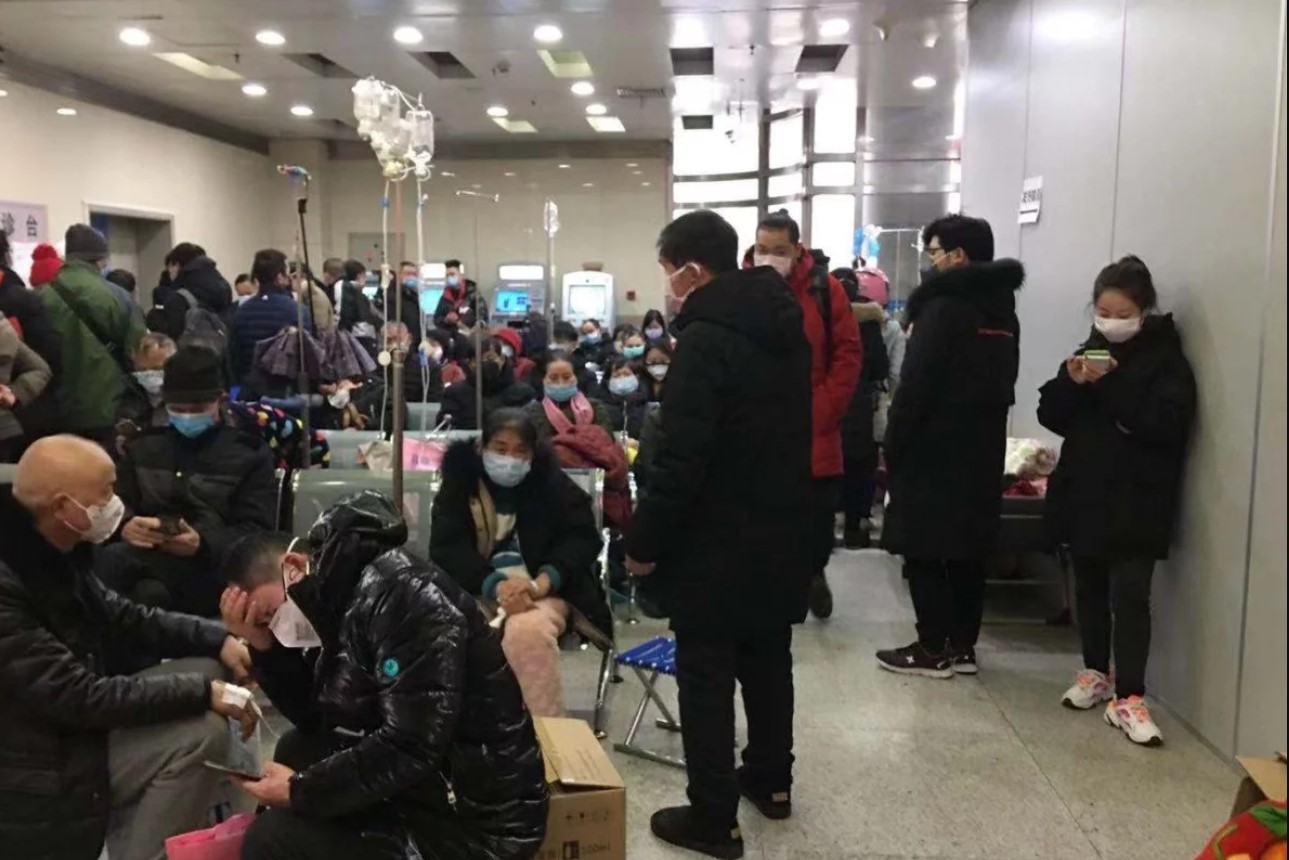
- Use a digital thermometer for oral, rectal, or axillary measurements
- For young children, rectal temperatures are most accurate
- For oral temperatures, wait at least 15 minutes after eating or drinking
- For axillary temperatures, add 1°F (0.5°C) to the reading for a more accurate estimate
- Always follow the manufacturer’s instructions for your specific thermometer
How often should you measure temperature during a fever? While it’s tempting to check frequently, constant monitoring isn’t usually necessary. For most cases, checking every 4-6 hours is sufficient unless directed otherwise by a healthcare provider.
Fever in Different Age Groups: Tailoring Your Approach
The approach to fever management can vary depending on the age of the individual. Let’s explore how fever assessment and treatment differ across age groups:
Infants (0-3 months)
Fevers in newborns and young infants are always considered serious due to their immature immune systems. Any temperature of 100.4°F (38°C) or higher in this age group warrants immediate medical attention, regardless of other symptoms.
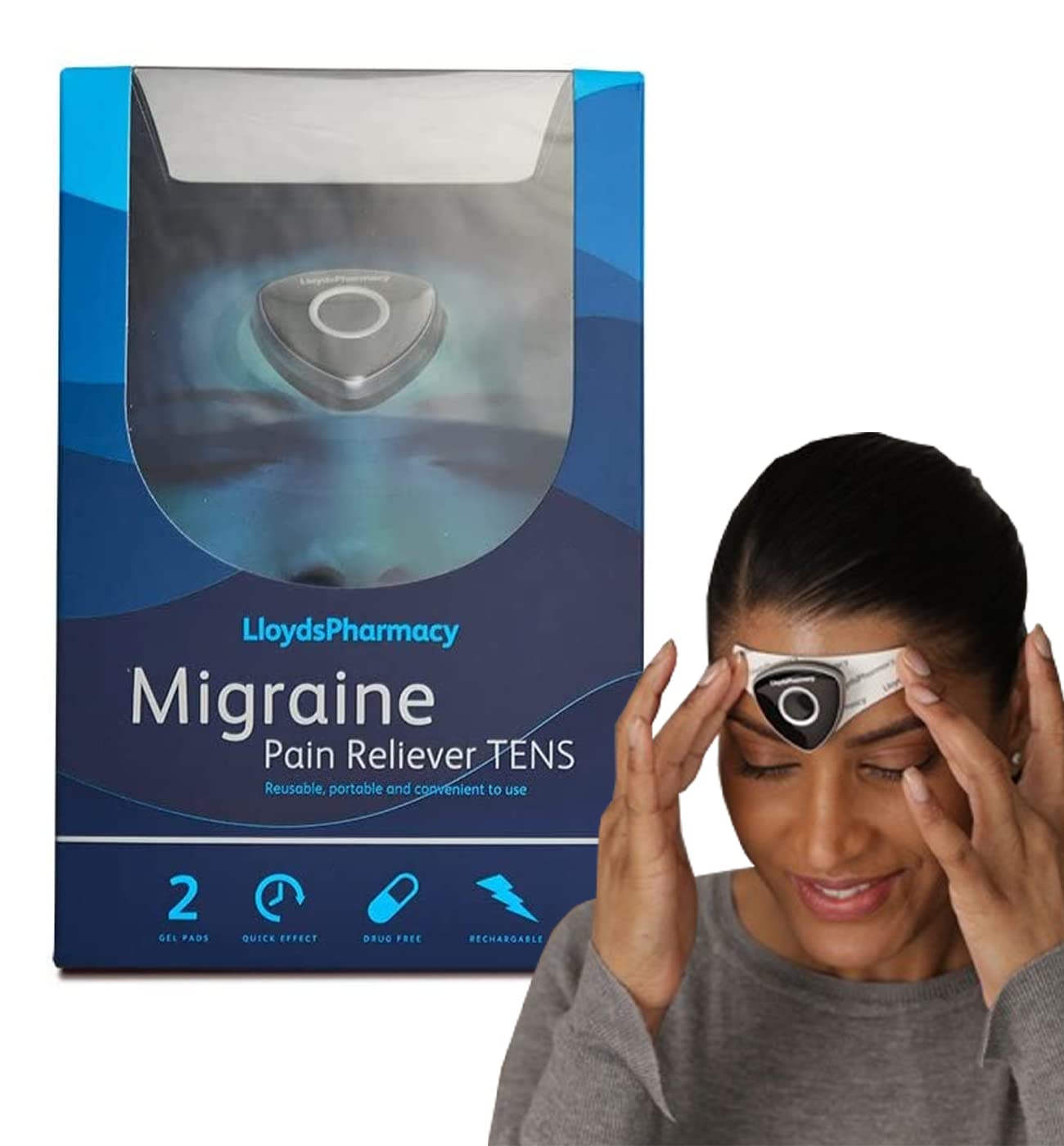
Toddlers and Young Children (3 months – 3 years)
For this age group, the fever itself is less concerning than accompanying symptoms. Pay close attention to behavior, hydration status, and any signs of specific illnesses. Fevers above 102°F (38.9°C) or lasting more than 72 hours should be evaluated by a healthcare provider.
Older Children (3 years – 12 years)
Older children can often communicate their symptoms more effectively. Focus on overall wellbeing, hydration, and specific complaints. Fevers lasting more than 72 hours or accompanied by concerning symptoms should be evaluated medically.
Teenagers and Adults
In generally healthy teens and adults, fevers can often be managed at home unless they’re exceptionally high (above 103°F or 39.4°C), persistent, or accompanied by severe symptoms.
Does age affect how quickly a fever should be treated? Yes, the younger the individual, particularly infants, the more quickly medical attention should be sought for a fever. As age increases, the body’s ability to handle fevers generally improves, allowing for more home management in uncomplicated cases.
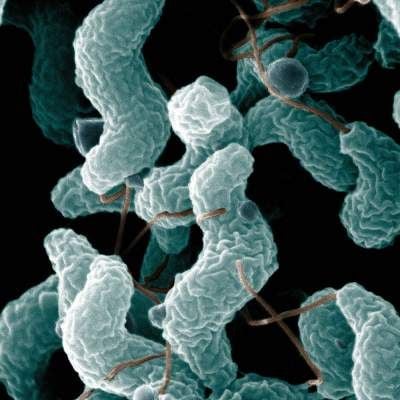
Understanding Fever Patterns: What They Mean for Your Health
Fevers can follow different patterns, each potentially indicating different underlying causes. Understanding these patterns can provide valuable information for healthcare providers in diagnosing and treating the root cause of the fever.
Common Fever Patterns
- Continuous fever: Temperature remains above normal throughout the day and doesn’t fluctuate more than 1°C (1.8°F)
- Intermittent fever: Temperature elevates above normal for a period, then returns to normal
- Remittent fever: Temperature fluctuates but never returns to normal
- Relapsing fever: Periods of fever alternate with fever-free periods
Can fever patterns help diagnose specific conditions? While fever patterns alone aren’t diagnostic, they can provide clues. For example, relapsing fevers might suggest certain parasitic infections, while a continuous high fever could indicate a bacterial infection.
Fever of Unknown Origin (FUO)
Sometimes, fevers persist without an identifiable cause. A fever of unknown origin is typically defined as:

- Temperature of 101°F (38.3°C) or higher
- Lasting for 3 weeks or more
- No identified cause after initial medical evaluation
FUOs can be challenging to diagnose and may require extensive testing to identify the underlying cause.
Fever Myths and Misconceptions: Separating Fact from Fiction
Many myths and misconceptions surround fevers, leading to unnecessary worry and sometimes inappropriate management. Let’s address some common misunderstandings:
Myth 1: Fever is an illness itself
Fact: Fever is a symptom, not an illness. It’s the body’s natural response to fight infection or inflammation.
Myth 2: All fevers are dangerous and need to be treated with medication
Fact: Most fevers are beneficial and don’t necessarily require medication. Treatment should focus on comfort rather than normalizing temperature.
Myth 3: Fevers can cause brain damage
Fact: Typical fevers (under 106°F or 41.1°C) don’t cause brain damage. Much higher temperatures, usually resulting from external causes like heatstroke, are required to harm the brain.
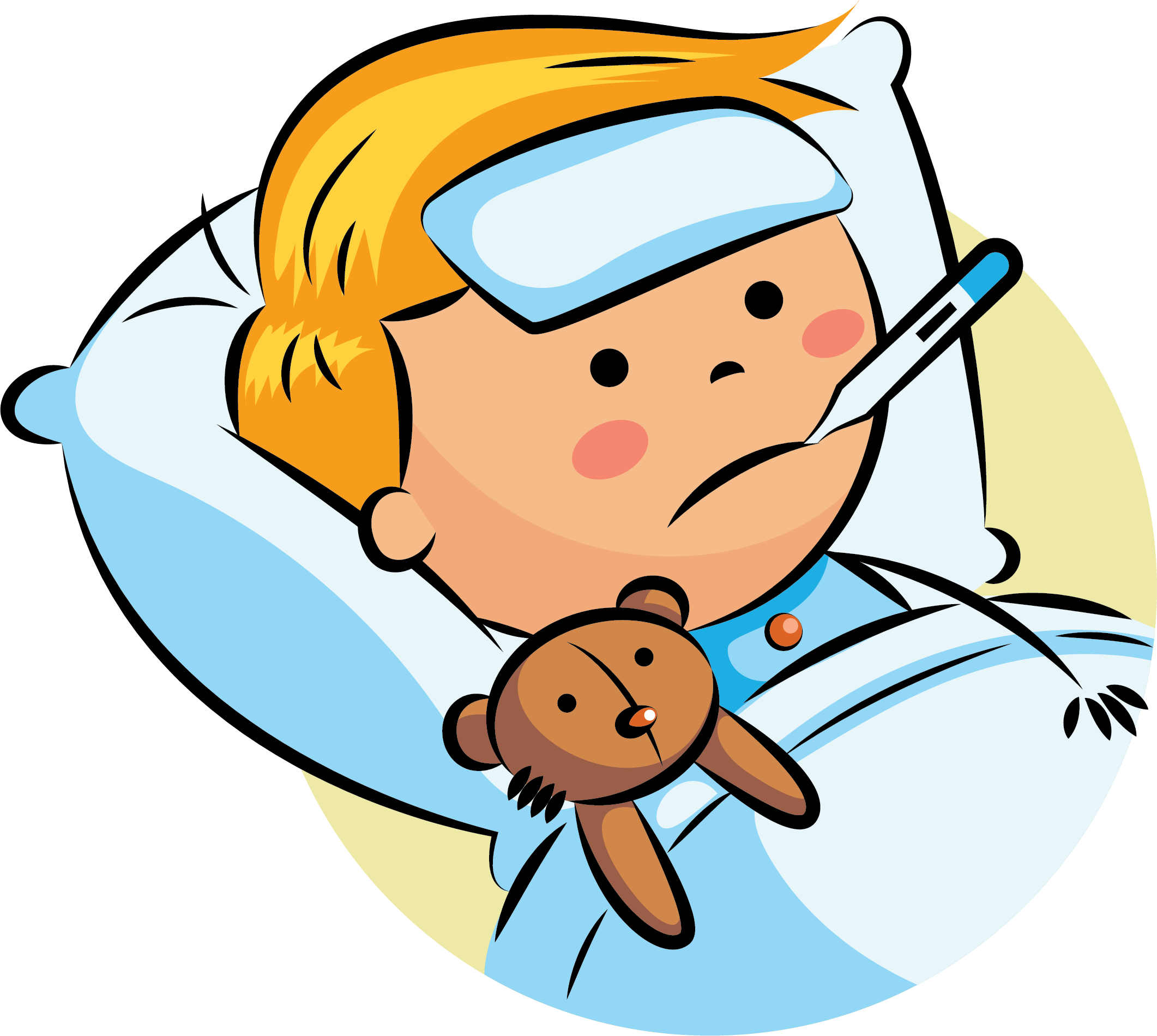
Myth 4: Bundling up helps “sweat out” a fever
Fact: Excessive bundling can actually raise body temperature and cause discomfort. Light clothing and a comfortable room temperature are best.
Myth 5: You can accurately determine fever by touch alone
Fact: While touch can indicate warmth, it’s not a reliable method to determine fever. A thermometer is necessary for accurate temperature measurement.
How can these myths impact fever management? Believing these myths can lead to unnecessary anxiety and overtreatment of fevers. Understanding the facts helps in appropriate and effective fever management.
Fever Prevention: Boosting Your Immune System
While not all fevers can be prevented, maintaining a strong immune system can help your body fight off infections more effectively, potentially reducing the frequency and severity of fevers. Here are some strategies to boost your immune health:
Nutrition for Immune Support
- Eat a balanced diet rich in fruits, vegetables, and whole grains
- Ensure adequate protein intake
- Include foods high in vitamins C, D, and E, as well as zinc and selenium
- Stay hydrated with plenty of water
Lifestyle Factors
- Get regular exercise
- Maintain a healthy sleep schedule
- Manage stress through relaxation techniques or mindfulness practices
- Avoid smoking and excessive alcohol consumption
Hygiene Practices
- Wash hands frequently and thoroughly
- Avoid close contact with sick individuals when possible
- Keep commonly touched surfaces clean and disinfected
- Practice good respiratory hygiene (cover coughs and sneezes)
Can these measures guarantee fever prevention? While these strategies can significantly boost your immune system and reduce your risk of infections, they can’t completely prevent all fevers. However, a strong immune system can help your body respond more effectively when infections do occur.

Vaccinations: A Key to Prevention
Staying up-to-date with recommended vaccinations is crucial for preventing many fever-causing illnesses. Vaccines work by priming your immune system to recognize and fight specific pathogens, often preventing infection altogether or reducing its severity if it does occur.
Which vaccines are most important for fever prevention? While all recommended vaccines are important, some that specifically help prevent fever-causing illnesses include:
- Influenza (flu) vaccine
- Pneumococcal vaccine
- Measles, Mumps, and Rubella (MMR) vaccine
- Varicella (chickenpox) vaccine
- COVID-19 vaccine
Always consult with your healthcare provider to ensure you’re following the recommended vaccination schedule for your age and health status.
What to Do When Your Kid Has a Fever
If you’re a parent, it’s a scene that’s all too familiar. You put your hand on your sick child’s forehead and it feels warm. Then the thermometer confirms your suspicion: They’ve got a fever. But if you follow some simple rules you’ll make them more comfortable and keep them safe.
Fever is a defense against infection. Your child’s body is raising its temperature to kill the germs. In most cases it’s harmless and goes away on its own in 3 days.
What You Should Do
Acetaminophen can lower your child’s temperature. If they’re older than 2, the dose will be listed on the label. If they’re younger, ask your doctor how much to give them.
Another option is ibuprofen if your child is at least 6 months old.
There’s a lot you can do to make them feel better. Put a cool compress on their head and keep their room at a moderate temperature — not too hot and not too cold. Dress them in one layer of light clothing and offer a light blanket. You can also cool them off with a lukewarm sponge bath.
You can also cool them off with a lukewarm sponge bath.
And don’t forget — make sure they drink a lot of fluids.
What You Shouldn’t Do
Never give your child aspirin. It can cause a serious condition called Reye’s syndrome.
Avoid combination cold and flu remedies in young kids. They shouldn’t be used in children under age 4. In older kids, it’s unclear how well they work.
If you decide to use a cold medicine, check with your pediatrician to be sure your child is old enough for the type of medicine you’re considering. According to the FDA, no child under the age of 2 should be given any kind of cough or cold product that contains a decongestant or antihistamine, and caution should be used even in children who are older than 2. In addition, no child under 4 years of age should be given a product that combines cough and cold medicines. The possible side-effects can be serious and even life-threatening.
If the doctor says it’s OK to use a cough or cold medicine, then read the label before you buy and pick the one that most closely matches your child’s symptoms. Don’t switch back and forth between different medications without your pediatrician’s OK.
Don’t switch back and forth between different medications without your pediatrician’s OK.
Don’t use an icy cold bath or rub your child’s skin with alcohol. Either can actually drive a fever up.
And even if your child has the chills, don’t bundle them up with thick blankets or clothes.
When Should You Call the Doctor?
Usually, you don’t need to take your sick child to the doctor. But sometimes fever can be a serious warning sign. Call your pediatrician if they:
- Has a temperature of 104 F or higher
- Is under 3 months old and has a temperature of 100.4 F or higher
- Has a fever that lasts for more than 72 hours (or more than 24 hours if your child is under age 2)
- Has a fever along with other symptoms such as a stiff neck, extremely sore throat, ear pain, rash, or severe headache
- Has a seizure
- Seems very sick, upset, or unresponsive
Tips to Take Your Child’s Temperature
How often do you need to check? That depends on the situation. Ask your pediatrician. Usually, you don’t need to take your child’s temperature obsessively or wake them up if they’re sleeping peacefully. But you should do it if their energy seems low.
Ask your pediatrician. Usually, you don’t need to take your child’s temperature obsessively or wake them up if they’re sleeping peacefully. But you should do it if their energy seems low.
Which thermometer is best for kids? Digital ones are best. They can be used in their mouth, rectally, or under the arm.
For young children, a rectal temperature is most accurate. If your kids are age 4 to 5 or older, you can probably get a good reading with a thermometer in the mouth. Under the arm is less reliable but it’s easier to do. Remember to add a degree to an underarm reading to get a more accurate number.
What’s considered a fever and when to see a doctor
Humans – like all mammals – are warm-blooded, meaning our bodies stay warm, or at a fairly consistent temperature, even when the temperature of our surroundings change.
For most of us, our bodies tend to hover between 97 and 99 degrees Fahrenheit. But in certain circumstances, our body temperate rises, resulting in a fever.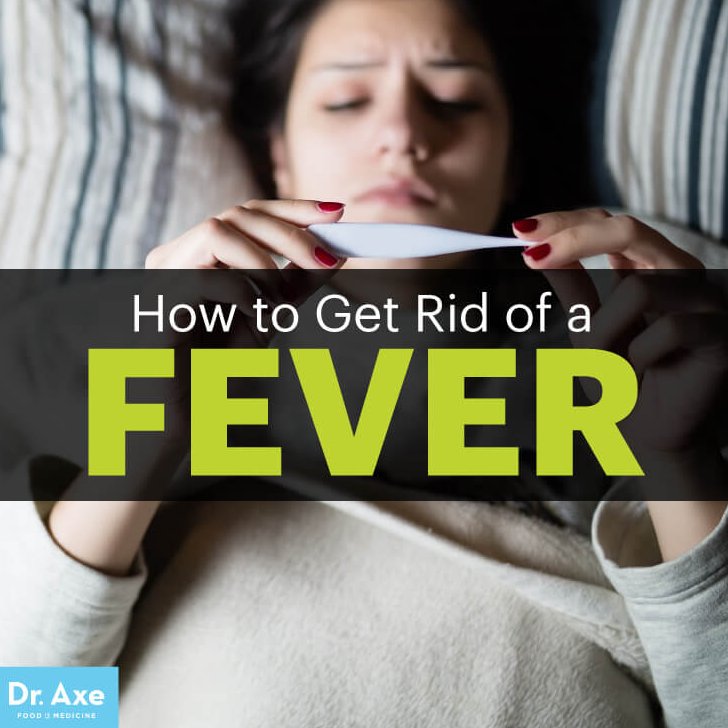
“Your body’s immune system creates a fever to fight off infection,” said Sarah Joseph, MD. As an internal medicine and pediatrics specialist, Dr. Joseph treats children and adults of all ages for a wide range of illnesses.
Low-grade fever
The medical community generally defines a fever as a body temperature above 100.4 degrees Fahrenheit. A body temp between 100.4 and 102.2 degree is usually considered a low-grade fever.
“If the temperature is not high, it doesn’t necessarily need to be treated with medication,” Dr. Joseph said.
A low-grade fever usually doesn’t require treatment, unless the fever is occurring in a very young infant, or if it’s accompanied by other worrisome symptoms, such as confusion or the inability to eat or drink without vomiting.
To bring down a fever without medication, Dr. Joseph suggests wearing minimal clothing or bathing in lukewarm or cool water. You should also be sure to drink plenty of fluids to keep your body hydrated.
And keep in mind that even a mild fever could be a sign of a contagious illness. Washing your hands and covering your cough are always good practices.
“In the age of COVID-19, one of the things people should keep in mind is that if they are having any kind of fever that is persisting, they should probably go get tested,” Dr. Joseph said.
Not sure whether you need a test or where to get tested? Use our digital assistant, Clare, located in the lower right corner of the OSF HealthCare website.
High fever
When body temperature rises above 102.2 degrees, it can be a sign of a more serious infection.
Most fevers will resolve in a few days, but Dr. Joseph says some circumstances could be reason to see a provider, either in a primary care office or urgent care clinic.
Consider seeing a doctor if:
- Fever lasts longer than three to five days
- Fever doesn’t respond to fever-reducing medications, such as acetaminophen or ibuprofen (Tylenol or Advil)
- Other symptoms include confusion, neck stiffness or sensitivity to light
“Another reason to seek medical attention is if you don’t feel right about how things are going,” Dr. Joseph said.
Rarely, a fever could be a sign of a medical emergency.
Call 911 or go directly to an emergency room if you have a fever and any of the following symptoms:
- Seizures
- Severe abdominal pain
- Pain or burning with urination
- Shortness of breath or chest pain
- Difficulty holding down fluids
- Severe headache
When to Call the Doctor for Your Child’s Fever
Nervous about your child’s fever? Here’s what you need to know.
By Katie Sweeney
What should you do if your child has a fever? When should you call the doctor? And how is fever related to COVID-19 and a new, rare condition in kids called multisystem inflammatory syndrome in children (MIS-C)?
Christopher Tolcher, MD, FAAP, a pediatrician with Agoura-West Valley Pediatrics—part of the CHLA Health Network—shares the facts on fever and what parents need to know.
What counts as a fever?
A normal body temperature for a child ranges from 97 to 100 degrees, with an average of around 98.6 F. When a person’s temperature reaches 100.4 or above, it’s a fever. (With an oral thermometer, anything over 99.5 is considered a fever.)
Fever is good
Fevers are common in children. And while a fever is never fun, in most cases it’s nothing to fear. It’s part of the body’s way of fighting an infection.
“Fever helps the immune system,” Dr. Tolcher explains. “It slows down the spread of viruses and bacteria. It helps the body make more antibodies and chemicals that fight the infection, and it helps the immune system’s cells move around better in the body.”
How high is too high?
“Fevers are almost never dangerous, with the exception of ‘hyperthermia’, or a high body temperature from the body’s being unable to cool off in a very hot environment,” he says.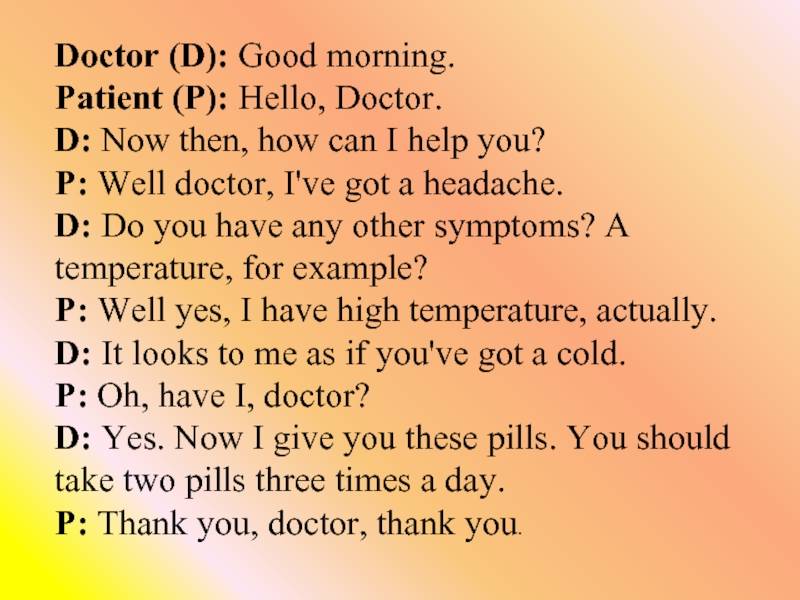 “A fever has to reach 107 to cause damage to tissues. That’s extremely rare.”
“A fever has to reach 107 to cause damage to tissues. That’s extremely rare.”
That said, if your child’s fever reaches 105, call your doctor. “It doesn’t mean the child is in danger,” he adds, “but the child should be checked by the doctor that day to see what’s going on.”
When to call the doctor
Call your child’s doctor right away for:
- A fever that lasts more than four to five days
- A fever (over 100.4) in a newborn younger than 2 months old
- If you can’t reach your doctor, go to the emergency department.
- A fever of 105 or higher in a child of any age, including teens
- A fever in an infant (less than a year old) over 102 for more than two days—without a clear reason for the fever
If your child has a fever AND any of the following signs, call your doctor right away or go to the emergency department:
- Widespread, red or purple rash
- Stiff neck and bad headache
- Severe pain, including bad abdominal pain
- Shortness of breath
- Extreme weakness or altered mental state
- Dehydration (diapers are dry, child is not peeing much and urine is very dark)
Fever and seizures
Children under 5 can sometimes have a seizure during a fever. “Seizures are scary as heck to watch, but most of the time, you don’t need to go to the ER,” Dr. Tolcher says.
“Seizures are scary as heck to watch, but most of the time, you don’t need to go to the ER,” Dr. Tolcher says.
- If your child has a seizure that lasts less than two minutes, call your doctor.
- If a seizure lasts more than four to five minutes, call 911.
COVID-19, MIS-C and Kawasaki disease
- COVID-19. In children, COVID-19 symptoms can be similar to colds and flu and can include fever, runny nose and cough, and sometimes vomiting and diarrhea. If you think your child might have COVID-19, call your doctor.
- MIS-C. MIS-C is a new health condition seen in some children who have been infected with the novel coronavirus and recovered—but later had an immune response that caused high levels of inflammation in their body. The symptoms are very similar to Kawasaki disease. MIS-C and Kawasaki disease are not contagious, but can be life-threatening.
Call your doctor if your child has any fever for more than four or five days. Also call your doctor if your child has a high fever AND any of the following: cracked red lips, red tongue, red eyes, swollen hands and feet, rash, abdominal pain or enlarged lymph nodes.
Also call your doctor if your child has a high fever AND any of the following: cracked red lips, red tongue, red eyes, swollen hands and feet, rash, abdominal pain or enlarged lymph nodes.
“I want to reassure parents that MIS-C is rare,” he adds. “We need to watch for it, but don’t freak out.”
Tips for treating a fever
- Treat the child, not the number. “Focus on how the child is doing, not the number on the thermometer,” Dr. Tolcher says. “If the fever is 100.5, but the child is crying from a headache or earache, give a pain reliever. But if they have a 104 and aren’t that bad, just give them fluids and keep them comfortable.”
- Don’t over-bundle. Too many layers and heavy blankets will raise the fever higher—and make your child more miserable. The child should dress comfortably. Lightweight pajamas and light blankets are fine.
- Give plenty of fluids. “The body burns through water a lot faster when it has a fever, which is why extra fluids are important,” Dr.
 Tolcher explains. “You don’t want your child to get dehydrated.”
Tolcher explains. “You don’t want your child to get dehydrated.”
Tip: Watch how much your child is peeing. If your child’s urine is dark, or your child is not peeing as often as normal, give more fluids. Good options: water, clear soups, electrolyte solution or popsicles.
- Focus on comfort. “You don’t have to get the fever down to 98.6,” Dr. Tolcher says. “If a child has a 104 and a lot of body aches, giving one medicine will bring it down two or three degrees. That’s enough. You just want to make the child more comfortable.
“If you aggressively try to keep it down to 98.6, you slow the immune response to the infection,” he notes.
- Be careful with dosing medicine. Keep track of what medicine you give and when. You don’t want the child to get extra doses. And don’t exceed the dosing intervals on the medicine label. If the directions say wait six hours, wait at least six hours.
The best medicines for fever are acetaminophen (Tylenol) or ibuprofen (Advil). Never give aspirin. If COVID-19 is suspected or diagnosed, acetaminophen should be your first choice.
Never give aspirin. If COVID-19 is suspected or diagnosed, acetaminophen should be your first choice.
The bottom line? Keep your child comfortable, hydrated and at home. “We all need to rest when we’re sick,” Dr. Tolcher says. “That’s one of the benefits of fever. It slows you down and gets you to take a break.”
When to Call the Doctor
When to Call the Doctor | TYLENOL®
Skip to main content
If your little one is feeling ill and you’re not completely sure what to do, don’t be afraid to pick up the phone. Sometimes it helps to get a second opinion to reassure your knowledge and instincts as a parent.
Here’s how to know if it’s time to call your child’s doctor:
Child is UNDER 3 months (12 weeks)
- Has a temperature of 100.4°F or higher
- Keep in mind that you know your child best. Always follow your instinct and call the doctor if you feel something is wrong.
Child is OVER 3 months (12 weeks)
- Has a temperature of 104°F or higher
- Has a temperature of 100.
 4°F or higher PLUS any of these symptoms:
4°F or higher PLUS any of these symptoms: - Severe headache
- Repeated vomiting or diarrhea
- Strange rash
- Sore throat or ear pain
- Stiff neck
- Looks very ill or is extremely drowsy/fussy
- Has been in a very hot place (such as an overheated car)
- Has underlying immune system problems, seizure history, or takes steroids
or
Child has ANY of the following
- Seems to be getting worse, even with comfort measures
- Is between 3 and 24 months and still has a fever (100.4°F or higher) after 24 hours
- Is 24 months or older and still has a fever (100.4°F or higher) after 3 days or still “acts sick” when the fever goes away
If you do call your child’s doctor, make sure to let them know which type (Infants’, Children’s, etc.) and strength of medicine you’re giving to your child, if any. Also inform them if your child has any underlying risk factors that could cause further complications.
A fever reducer and pain reliever in kid-friendly flavors.
Help prevent accidental overdose.
Link your social account
{* loginWidget *}
Or use your traditional account
{* #userInformationForm *}
Email Address
{* traditionalSignIn_emailAddress *}
Password
{* traditionalSignIn_password *}
{* traditionalSignIn_signInButton *}
{* /userInformationForm *}
Welcome back, {* welcomeName *}!
{* loginWidget *}
Welcome back!
{* #userInformationForm *}
{* traditionalSignIn_emailAddress *}
{* traditionalSignIn_password *}
{* traditionalSignIn_signInButton *}
{* /userInformationForm *}
{* #socialRegistrationForm *}
{* socialRegistration_firstName *}
{* socialRegistration_lastName *}
Your first name and last initial will be displayed publicly to other users when you write a review or blog post (ex. ”John S.”).
{* socialRegistration_gender *}
{* socialRegistration_zipcode *}
{* socialRegistration_emailAddress *}
Will be used as your user name
{% customQuestions %}
{% customOptin %}
Registration permits you to participate in all areas of this site.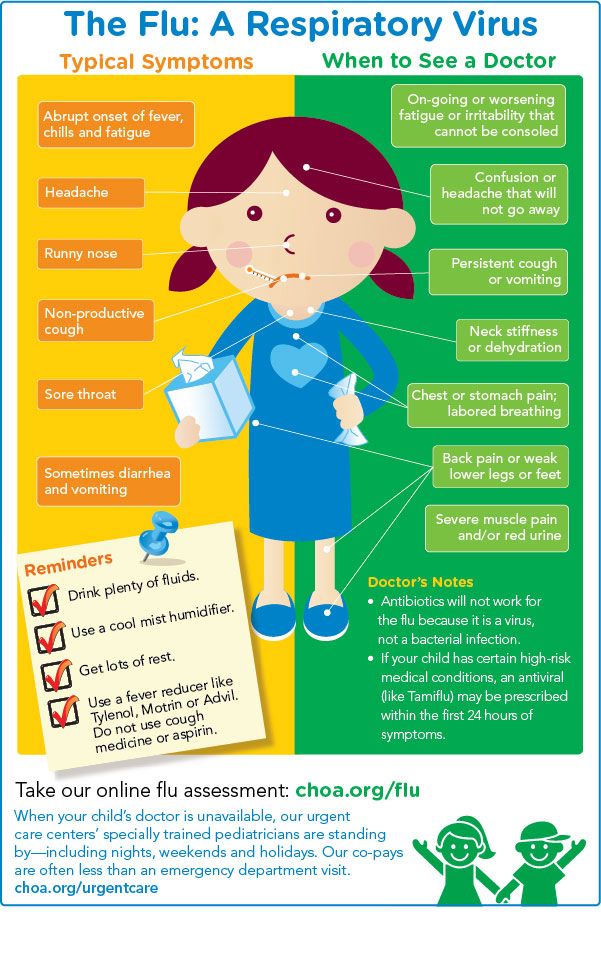 By submitting your information above, you agree that the information you provide will be governed by our site’s Privacy Policy.
By submitting your information above, you agree that the information you provide will be governed by our site’s Privacy Policy.
{* /socialRegistrationForm *}
Link an existing social account:
{* loginWidget *}
Or create an account by providing the information below.
{* #registrationForm *}
{* traditionalRegistration_firstName *}
{* traditionalRegistration_lastName *}
Your first name and last initial will be displayed publicly to other users when you write a review or blog post (ex. ”John S.”).
{* traditionalRegistration_gender *}
{* traditionalRegistration_zipcode *}
{* traditionalRegistration_emailAddress *}
Will be used as your user name
{* traditionalRegistration_password *}
{* traditionalRegistration_passwordConfirm *}
{% customQuestions %}
{% customOptin %}
Registration permits you to participate in all areas of this site. By submitting your information above, you agree that the information you provide will be governed by our site’s Privacy Policy.
{* /registrationForm *}
{* #requirementsPostLoginForm *}
{* firstName *}
{* lastName *}
{* gender *}
{* zipcode *}
By submitting your information above, you agree that the information you provide will be governed by our site’s Privacy Policy.
{* saveButton *}
{* /requirementsPostLoginForm *}
All fields required
{* #forgotPasswordForm *}
Email Address
{* traditionalSignIn_emailAddress *}
{* /forgotPasswordForm *}
Looks like you have an existing account with us. We have made some changes to our site and we need you to create a new password in order to login. Click send to recieve an email with instructions on how to create your new password.
{* #optinUserNewPasswordForm *}
{* optinUser_emailAddress *}
{* /optinUserNewPasswordForm *}
Please check your email for a reset link to continue the reset process.
{* mergeAccounts *}
{* #tradAuthenticateMergeForm *}
{* traditionalSignIn_emailAddress *}
{* mergePassword *}
{* /tradAuthenticateMergeForm *}
{* #privacyPolicyPostLoginForm *}
By clicking “Accept” below, you confirm that you have read, understand and accept our sites’s Privacy Policy
{* /privacyPolicyPostLoginForm *}
You do not meet the minimum age requirement to sign in to this site
Your account is deactivated.
When to worry about your child’s fever – Harvard Health Blog
Follow me on Twitter @drClaire
Fevers worry parents; they scare them sometimes. I understand why. After all, fevers can be a sign of something serious — and at the beginning of one, it’s hard to know whether it’s going to turn out to be something serious.
Most of the time, it isn’t serious. Fevers are very common. They are part of how the body fights infection. The average child will get several viral infections a year — which means several fevers. The vast majority of fevers are nothing to worry about, and pass in a day or two.
Sometimes, though, parents should worry. Here are some circumstances when you should be worried about a fever and seek medical attention immediately:
- If your child is less than 3 months old. While most fevers in newborns turn out just fine, their defenses are still getting up and going and they aren’t very good at telling us what hurts.

- If the fever is accompanied by a dark rash (small or larger spots, flat or raised) that looks almost like a bruise and doesn’t get paler when you press on it. This can be a sign of a serious infection.
- If your child is extremely sleepy or extremely irritable. This always worries doctors. Kids are often sleepy and cranky when they get sick. What I’m talking about here is when that sleepiness and crankiness get severe. If you aren’t sure whether your child’s symptoms are severe, call and talk to your doctor (or the person on call).
- If your child has severe pain, or difficulty moving any part of the body (like the neck).
- If your child has trouble breathing, or is breathing more quickly or forcefully than usual. It could be a sign of a serious lung infection.
- If your child has a condition, or is taking a medication, that makes it harder for them to fight infection. It’s important to check in early with your doctor.

It’s also a good idea to call your doctor if:
- Your child has a fever greater than 102° F (or 39° C). It’s probably nothing serious, but it’s worth checking in with a doctor or nurse to go through things and see if a visit to the office or emergency room makes sense.
- Your child has a rash with the fever (not like the one described above, for that, go right to the emergency room). It’s most likely nothing to be worried about, but some viruses worry us more than others (like measles, or chicken pox) and some bacterial infections that need antibiotics (like strep throat, or cellulitis) can cause rashes.
- The fever has lasted more than two to three days. Again, probably nothing to worry about, but worth checking in to be sure.
- Your child is drinking much less than usual, especially if they are also urinating much less than usual. They may be dehydrated.
- There is something else that doesn’t seem right to you. Over the years, I’ve learned to trust a parent’s instincts.
 You know your child better than anyone. Call if you are worried.
You know your child better than anyone. Call if you are worried.
If none of this applies, chances are your child has a minor illness and will be just fine. Acetaminophen and ibuprofen can be helpful for making your child more comfortable, although if your child is acting fine and drinking (eating is optional, it’s the drinking that’s key), it might be best to let the fever be and let the body do its job. Make sure your child gets plenty of rest — and TLC.
When to Take Your Child to the Doctor
By Diana Rosenberg, MD
Family Medicine, Rush Copley Medical Group
Many parents worry at the first sign of illness in a child and seek medical attention right away. Your instincts are correct to want to seek help, but you may not need to run to the doctor’s office right away each time the sign of a fever or cold presents itself.
Fever
A fever is one of the most common symptoms reported to doctors. A temperature of more than 100. 5 degrees Fahrenheit is considered a fever. A fever is the body’s response to infection and implies a healthy immune response. It is important to realize that fever itself is not a disease, it is a sign of an underlying condition.
5 degrees Fahrenheit is considered a fever. A fever is the body’s response to infection and implies a healthy immune response. It is important to realize that fever itself is not a disease, it is a sign of an underlying condition.
According to the American Academy of Pediatrics, you should call the doctor if the temperature becomes higher than the maximums recommended for a child his age.
Call the doctor if:
- An infant is under three months of age with any fever.
- A child three to six months of age has a rectal temperature of 101 degrees F or higher and six months of age or older with a rectal temperature of 103 degrees F.
- The child is older than three months, and the fever has lasted more than three days.
Fevers of more than 101 degrees are most often controlled with acetaminophen. The recommended dosage is 10 to 15 mg per kg of the body weight every four hours. This medication is available as infant drops or children’s liquid. Ibuprofen is equally effective in controlling fever and can be administered in doses of 5 to 10 mg per kg of body weight every six to eight hours.
Ibuprofen is equally effective in controlling fever and can be administered in doses of 5 to 10 mg per kg of body weight every six to eight hours.
One of the most common mistakes parents make is to bundle a child in layers of clothes and blankets. This conserves body heat, and heat should be allowed to dissipate from the skin surface. A child with a fever should be dressed lightly in light clothing. For temperatures more than 103 degrees, sponging with tepid water is recommended. Do not use cold water or alcohol as it results in narrowing of the vessels bringing blood to the skin. This will make the body retain heat rather than losing it.
The common cold
The common cold is spread from person to person via airborne droplets containing the cold virus or via contaminated hands and or objects. A cold is most contagious from one day before to seven days after the onset of symptoms. A cold typically lasts for five to seven days in an adult and slightly longer for children. Unfortunately, young children get frequent colds and they often can overlap.
Unfortunately, young children get frequent colds and they often can overlap.
Cold symptoms tend to come on gradually, and may include a runny nose, congestion, sneezing, reduced sense of taste and smell, a scratchy throat and cough.
Call the doctor if:
- The child develops an earache.
- The child develops a fever over 102 degrees F.
- The child becomes exceptionally sleepy, cranky or fussy.
- A skin rash develops.
- Breathing becomes rapid or labored.
- The cough becomes persistent or severe.
In addition to rest and plenty of fluids, there are several things you can do to keep your child more comfortable while they are recovering from a cold. Clear a child’s runny nose by using a nasal aspirator or place a vaporizer in the room. Keep their face clean as infections of the face can occur as a result of prolonged exposure to nasal secretions.
Get your doctor’s approval before administering any cold medications to an infant.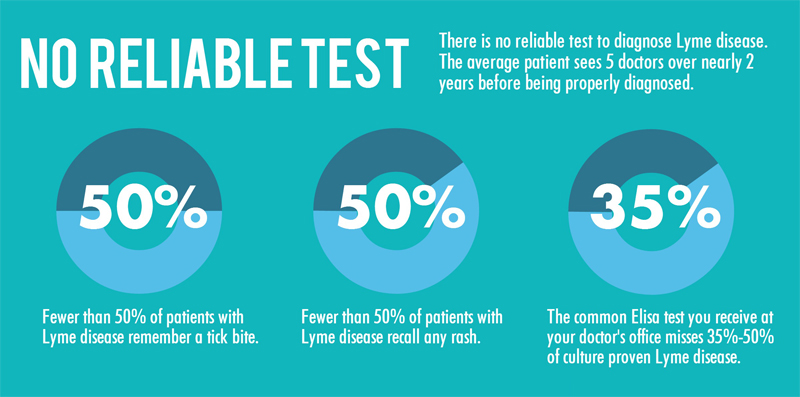 Oral decongestants tend to be ineffective and can result in rapid heartbeat or insomnia, and antihistamines are not ineffective. The best medication for infants is a cough syrup that contains dextromethorphan (DM) to treat a frequent, dry, hacking, nonproductive cough.
Oral decongestants tend to be ineffective and can result in rapid heartbeat or insomnia, and antihistamines are not ineffective. The best medication for infants is a cough syrup that contains dextromethorphan (DM) to treat a frequent, dry, hacking, nonproductive cough.
If you are ever in doubt about your child’s symptoms or health, it is always best to call your doctor.
Fevers (for Parents) – Nemours
All kids get a fever from time to time. A fever itself usually causes no harm and
can actually be a good thing — it’s often a sign that the body is fighting an
infection.
But when your child wakes in the middle of the night flushed, hot, and sweaty,
it’s easy to be unsure of what to do next. Should you get out the thermometer? Call
the doctor?
Here’s more about fevers, including when to contact your doctor.
What Is a Fever?
Fever happens when the body’s internal “thermostat” raises the body temperature
above its normal level. This thermostat is found in a part of the brain called the
This thermostat is found in a part of the brain called the
hypothalamus. The hypothalamus knows what temperature your body should be (usually
around 98.6°F/37°C) and will send messages to your body to keep it that way.
Most people’s body temperatures change a little bit during the course of the day:
It’s usually a little lower in the morning and a little higher in the evening and
can vary as kids run around, play, and exercise.
Sometimes, though, the hypothalamus will “reset” the body to a higher temperature
in response to an infection, illness, or some other cause. Why? Researchers believe
that turning up the heat is a way for the body to fight the germs
that cause infections, making it a less comfortable place for them.
What Causes Fevers?
It’s important to remember that fever by itself is not an illness — it’s
usually a sign or symptom of another problem.
Fevers can be caused by a few things, including:
Infection: Most fevers are caused by infection or other illness.
A fever helps the body fight infections by stimulating natural defense mechanisms.
Overdressing: Infants, especially newborns, may get fevers if
they’re overbundled or in a hot environment because they don’t regulate their body
temperature as well as older kids. But because fevers in newborns can indicate a serious
infection, even infants who are overdressed must be checked by a doctor if they have
a fever.
Immunizations: Babies and kids sometimes get a low-grade fever
after getting vaccinated.
Although teething may cause a slight
rise in body temperature, it’s probably not the cause if a child’s temperature is
higher than 100°F (37.8°C).
When Is a Fever a Sign of Something Serious?
In healthy kids, not all fevers need to be treated. High fever, though, can make
High fever, though, can make
a child uncomfortable and make problems (such as dehydration)
worse.
Doctors decide on whether to treat a fever by considering both the temperature
and a child’s overall condition.
Kids whose temperatures are lower than 102°F (38.9°C) often don’t need
medicine unless they’re uncomfortable. There’s one important exception: If
an infant 3 months or younger has a rectal temperature of 100.4°F (38°C) or
higher, call your doctor or go to the emergency department immediately. Even
a slight fever can be a sign of a potentially serious infection in very young babies.
If your child is between 3 months and 3 years old and has a fever of 102.2°F
(39°C) or higher, call to see if your doctor needs to see your child. For older
kids, take behavior and activity level into account. Watching how your child behaves
will give you a pretty good idea of whether a minor illness is the cause or if your
child should be seen by a doctor.
The illness is probably not serious if your child:
- is still interested in playing
- is eating and drinking well
- is alert and smiling at you
- has a normal skin color
- looks well when his or her temperature comes down
And don’t worry too much about a child with a fever who doesn’t want to eat. This
is very common with infections that cause fever. For kids who still drink and urinate
(pee) normally, not eating as much as usual is OK.
Is it a Fever?
A gentle kiss on the forehead or a hand placed lightly on the skin is often enough
to give you a hint that your child has a fever. However, this method of taking
a temperature (called tactile temperature) won’t give an accurate measurement.
Use a reliable digital thermometer to confirm a fever. It’s a
fever when a child’s temperature is at or above one of these levels:
- measured orally (in the mouth): 100°F (37.
 8°C)
8°C) - measured rectally (in the bottom): 100.4°F (38°C)
- measured in an axillary position (under the arm): 99°F (37.2°C)
But how high a fever is doesn’t tell you much about how sick your child is. A simple
cold or other viral infection can sometimes cause a rather high fever (in the 102°–104°F/38.9°–40°C
range), but this doesn’t usually mean there’s a serious problem. In fact, a serious
infection, especially in infants, might cause no fever or even a low body temperature
(below 97°F or 36.1°C).
Because fevers can rise and fall, a child might have chills as the body’s temperature
begins to rise. The child may sweat to release extra heat as the temperature starts
to drop.
Sometimes kids with a fever breathe faster than usual and may have a faster heart
rate. Call the doctor if your child has trouble breathing, is breathing faster than
normal, or is still breathing fast after the fever comes down.
How Can I Help My Child Feel Better?
Again, not all fevers need to be treated. In most cases, a fever should be treated
only if it’s causing a child discomfort.
Here are ways to ease symptoms that often accompany a fever:
Medicines
If your child is fussy or uncomfortable, you can give acetaminophen
or ibuprofen based on the package
recommendations for age or weight. (Unless instructed by a doctor, never give aspirin
to a child due to its association with Reye syndrome, a rare but potentially fatal
disease.) If you don’t know the recommended dose or your child is younger than 2 years
old, call the doctor to find out how much to give.
Infants younger than 2 months old should not be given any medicine for fever without
being checked by a doctor. If your child has any medical problems, check with the
doctor to see which medicine is best to use. Remember that fever medicine can temporarily
Remember that fever medicine can temporarily
bring a temperature down, but usually won’t return it to normal — and it won’t
treat the underlying reason for the fever.
Home Comfort Measures
Dress your child in lightweight clothing and cover with a light sheet or blanket.
Overdressing and overbundling can prevent body heat from escaping and can cause the
temperature to rise.
Make sure your child’s bedroom is a comfortable temperature — not too hot
or too cold.
While some parents use lukewarm sponge baths to lower fever, this method only helps
temporarily, if at all. In fact, sponge baths can make kids uncomfortable. Never use
rubbing alcohol (it can cause poisoning when absorbed through the skin) or ice packs/cold
baths (they can cause chills that can raise body temperature).
Food and Drinks
Offer plenty of fluids to avoid dehydration
because fevers make kids lose fluids more rapidly than usual. Water, soup, ice pops,
Water, soup, ice pops,
and flavored gelatin are all good choices. Avoid drinks with caffeine, including colas
and tea, because they can make dehydration worse by increasing urination (peeing).
If your child also is vomiting and/or has diarrhea, ask the doctor if you should
give an electrolyte (rehydration) solution made especially for kids. You can find
these at drugstores and supermarkets. Don’t offer sports drinks — they’re not
made for younger children and the added sugars can make diarrhea worse. Also, limit
your child’s intake of fruits and apple juice.
In general, let kids eat what they want (in reasonable amounts), but don’t force
it if they don’t feel like it.
Taking it Easy
Make sure your child gets plenty of rest. Staying in bed all day isn’t necessary,
but a sick child should take it easy.
It’s best to keep a child with a fever home from school or childcare. Most doctors
Most doctors
feel that it’s safe to return when the temperature has been normal for 24 hours.
When Should I Call the Doctor?
The exact temperature that should trigger a call to the doctor depends on a child’s
age, the illness, and whether there are other symptoms with the fever.
Call your doctor if you have an:
- infant younger than 3 months old with a rectal temperature of 100.4°F (38°C)
or higher - older child with a temperature of higher than 102.2°F (39°C)
Also call if an older child has a fever of lower than 102.2°F (39°C) but
also:
- refuses fluids or seems too ill to drink adequately
- has lasting diarrhea or
repeated vomiting - has any signs of dehydration (peeing less than usual, not having tears when crying,
less alert and less active than usual) - has a specific complaint (like a sore
throat or earache) - still has a fever after 24 hours (in kids younger than 2 years old) or 72 hours
(in kids 2 years or older) - is getting fevers a lot, even if they only last a few hours each night
- has a chronic medical problem, such as heart disease, cancer, lupus,
or sickle cell disease - has a rash
- has pain while peeing
Get emergency care if your
child shows any of these signs:
- crying that won’t stop
- extreme irritability or fussiness
- sluggishness and trouble waking up
- a rash or purple spots that look like bruises on the skin (that were not there
before your child got sick) - blue lips, tongue, or nails
- infant’s soft spot on the head seems to be bulging out or sunken in
- stiff neck
- severe headache
- limpness or refusal to move
- trouble breathing that doesn’t get better when the nose is cleared
- leaning forward and drooling
- seizure
- moderate to severe belly pain
Also, ask if your doctor has specific guidelines on when to call about a fever.
What Else Should I Know?
All kids get fevers, and in most cases they’re completely back to normal within
a few days. For older babies and kids, the way they act can be more important than
the reading on your thermometer. Everyone gets a little cranky when they have a fever.
This is normal and should be expected.
But if you’re ever in doubt about what to do or what a fever might mean, or if
your child is acting ill in a way that concerns you even if there’s no fever, always
call your doctor for advice.
Date reviewed: September 2018
90,000 HEMORRHAGIC FEVER WITH RENAL SYNDROME, PREVENTIVE MEASURES
Date: 09.09.2019 17:42
Hemorrhagic fever with renal syndrome (HFRS or, popularly, mouse fever) is a natural focal infection. This means that the pathogen parasitizes in the body of wild animals and together with them forms foci of the disease that exist in nature indefinitely.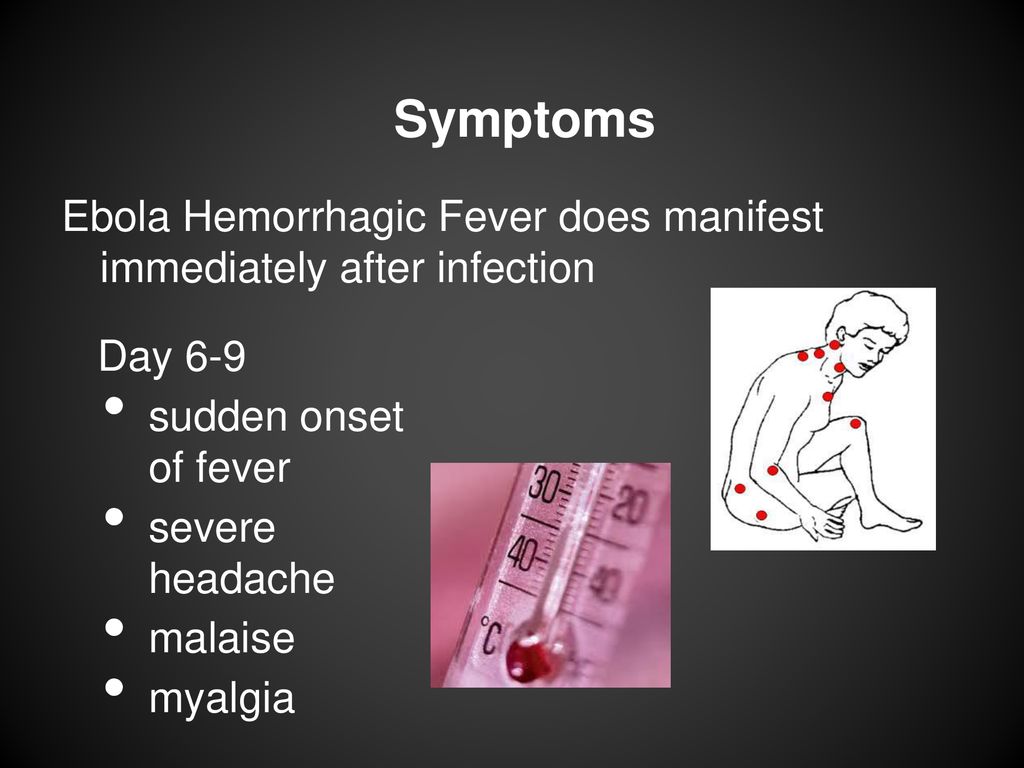 Natural foci of HFRS are geographically located in the forest-steppe zone and forests of Samarskaya Luka, confined to the massifs of deciduous forests and occupy a significant part of the region’s territory (about 60% of the region’s area).
Natural foci of HFRS are geographically located in the forest-steppe zone and forests of Samarskaya Luka, confined to the massifs of deciduous forests and occupy a significant part of the region’s territory (about 60% of the region’s area).
WHAT ARE THE AGENT, RESERVOIR AND SOURCES OF INFECTION?
The causative agent of the disease is a virus, the main carrier of which is the bank vole, the most numerous mouse-like rodent up to 10 cm in length, the fur on the back is colored red-brown.
The disease in voles occurs in a latent form in the form of a virus carrier. Transmission of infection between rodents is carried out through gamasid mites. The higher the number of forest mouse-like rodents, the more actively the virus is transmitted from animal to animal, capable of surviving in ticks at low temperatures and sensitive to high temperatures.When boiled, it dies after 2 minutes. It lasts up to 2 months in milk and dairy products.
HOW DOES HUMAN INFECTION HAPPEN?
Human infection occurs by airborne dust through inhalation of dried feces of infected rodents upon contact with grass and hay where they live. Possible foodborne contamination through food and hands contaminated with rodent excreta. Infections most often occur during a short stay on vacation in the forest when collecting brushwood, deadwood, medicinal herbs, berries, mushrooms, when working in gardens, vegetable gardens and dachas, at the place of residence, in houses located near the forest, in production related to work in or near the forest, in the countryside, when transporting hay and straw, etc.etc.
Possible foodborne contamination through food and hands contaminated with rodent excreta. Infections most often occur during a short stay on vacation in the forest when collecting brushwood, deadwood, medicinal herbs, berries, mushrooms, when working in gardens, vegetable gardens and dachas, at the place of residence, in houses located near the forest, in production related to work in or near the forest, in the countryside, when transporting hay and straw, etc.etc.
HFRS diseases occur throughout the year. The lowest incidence rate occurs in February-April, in May the number of cases increases and reaches a maximum in September-October, then a gradual decline occurs. The nature of seasonality is determined by the number and species composition of rodents, the degree and frequency of contact of the population with the source of infection. The incidence rate in different years depends both on the number of rodents and on climatic and social factors (forest development).
Once in the human body, the HFRS virus affects the central nervous system, blood vessels, and internal organs.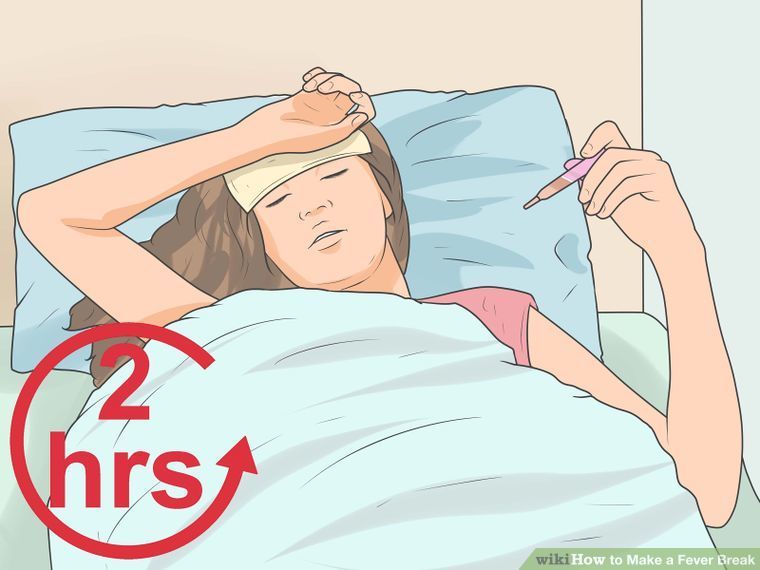
The duration of the latent incubation period lasts from 7 to 35 days, usually 2-3 weeks.
WHAT ARE THE SIGNS OF THE DISEASE?
The disease begins suddenly – with chills, fever, severe headaches, aching muscles and joints, loss of appetite and general weakness.Subsequently, vomiting, nausea, dizziness, insomnia join.
The high temperature lasts 3-5 days, then gradually decreases. During this period, pain in the lower back and abdomen appears, i.e. the most pronounced signs of kidney damage. Some patients have nose and stomach bleeding, skin rash and hemorrhages in the sclera of the eyes, short-term visual impairment in the form of impaired ability to distinguish details of surrounding objects. The patient is worried about thirst, at the same time, due to impaired renal function, urine output decreases.
If you do not consult a doctor for medical help in a timely manner, severe forms of the disease can develop, which pose a serious danger to human life.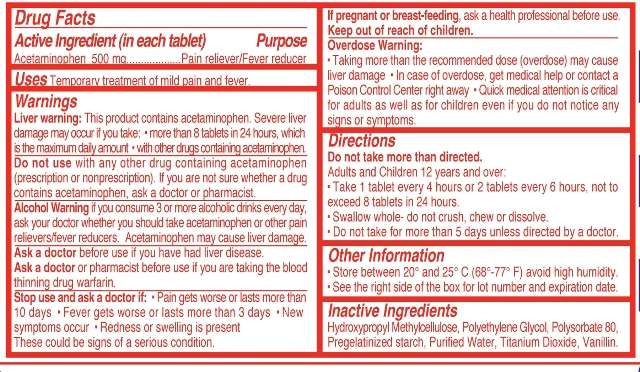
HOW TO PROTECT FROM THE DISEASE?
HFRS prevention measures are aimed, first of all, at eliminating any kind of human contact with murine rodents, with their secretions, burrows, at protecting food and drinking water from contamination by them, preventing rodents from entering living quarters and premises for temporary stay of people.
To protect yourself from infection with the HFRS virus, you must remember to observe personal hygiene!
When visiting the forest:
§ you can not catch and take in the hands of rodents;
§ in no case should you leave food on the ground and in other places accessible to rodents;
§ Do not eat food that has been spoiled or contaminated by rodents;
§ avoid spending the night in haystacks, stacks of straw, huts, abandoned buildings;
§ when camping in the forest, choose dry, not overgrown with bushes, preferably in pine or birch forests;
§ do not use last year’s hay or straw for bedding; do not smoke or eat with unwashed hands.
When living in houses located in the immediate vicinity of the forest or when leaving for garden and summer cottages:
§ it is necessary to ensure that rodents do not penetrate into the living quarters, in a timely manner to close the ventilation openings with grilles with small cells;
§ regularly carry out rodent-extermination work using poisoned baits or mechanical traps, especially during the period of mass migration of mouse-like rodents from the forest closer to the dwelling;
§ all types of work related to the formation of dust should be carried out in a 4-layer moistened gauze bandage, specially selected clothing, gloves;
§ It is necessary to regularly clean the area adjacent to home buildings from household waste, dead wood, dead wood; do not leave it dumped in heaps, where small mouse-like rodents can also settle, but take it to authorized dumps;
§ When purchasing baits, you need to pay attention to the presence of clear instructions for use and the presence of state registration of the drug.
If signs of illness appear: fever, pain in the lumbar region, muscles, a decrease in the amount of urine excreted and a change in its color, consult a doctor immediately, it is dangerous to self-medicate.
Materials provided by the Office of the Federal Service
on supervision in the field of consumer protection
and human well-being in the Samara region
Ebola – DZM
Ebola – causes, symptoms, diagnosis, treatment (V.Pokrovsky, 2007)
acute, presumably zoonotic disease from the group of viral hemorrhagic fevers, occurring with severe hemorrhagic syndrome, is characterized by a high mortality rate. Refers to especially dangerous viral infections.
Etiology
The causative agent of Ebola is an RNA genomic virus of the Filovirus genus of the Filoviridae family. Identified 3 virus strains – Zaire, Sudan, Renston – differing in antigenic structure.Clear differences were found between the Zaire and Sudan strains in terms of genetic, biological and biochemical properties.
In vitro cultures of the pathogen are maintained by passage through the liver or blood of monkeys.
The Ebola virus is moderately resistant to the environment.
Ebola virus
Epidemiology
The reservoir and source of infection in nature is poorly understood, most likely, it is mainly represented by various rodents.
The role of monkeys as sources of infection is not excluded.
A sick person is very dangerous to others, 5-8 consecutive transmissions of the virus from a sick person and the occurrence of nosocomial outbreaks of the disease are known. It was noted that with the first transmissions the mortality was the highest (100%), then it decreased.
The virus is detected in various organs, tissues and secretions: in blood (7-10 days), nasopharyngeal mucus, urine, semen.
The patient poses a high danger within 3 weeks from the onset of the disease; during the incubation period, the sick virus does not emit.
Ebola transmission mechanism varied.
The polytropic nature of the virus, the variety of ways of its excretion from the body determine the possibility of infection through contact with the blood of patients, through sexual and aerosol routes, when using common household items and eating together. It has been established that infection with Ebola is mainly realized through direct contact with infected material. The disease is highly contagious and is transmitted when the virus enters the skin and mucous membranes .The most dangerous is blood. The greatest risk of infection is exposed to medical personnel when caring for patients, as well as personnel who capture, transport and care for monkeys
Natural susceptibility of people to Ebola is high.
Post-infectious immunity is stable.
Recurrences are rare; their frequency does not exceed 5%.
Main epidemiological signs:
foci of circulation of the Ebola virus are located in the tropical rainforest zone of Central and West Africa (Zaire, Sudan, Nigeria, Liberia, Gabon, Senegal, Kenya, Cameroon, Ethiopia, Central African Republic).
Ebola outbreaks occur in endemic foci mainly in spring and summer.
Pathogenesis
During the incubation period Ebola virus reproduces in regional lymph nodes, spleen and possibly other organs.
Acute onset of the disease with fever coincides with the development of intense viremia with multiple organ dissemination of the pathogen.
The damage to cells and tissues of various organs is presumably due to both the direct cytopathic effect of the virus and autoimmune reactions.
The development of microcirculation disorders and blood rheological properties is manifested by capillarotoxicosis with hemorrhagic syndrome, perivascular edema, and disseminated intravascular coagulation.
Disseminated intravascular coagulation is the leading syndrome diagnosed histologically.
Pathological changes in organs in the form of focal necrosis, disseminated hemorrhages in the clinical picture are manifested by signs of hepatitis, interstitial pneumonia, pancreatitis, orchitis, etc. diseases are rarely detected; in convalescents, they appear late.
Clinical presentation
The incubation period varies from several days to 2-3 weeks. The onset of the disease is acute, with an increase in body temperature to 38-39 ° C, headache, myalgia and arthralgia, malaise, nausea.
During the first days, most patients experience symptoms of angina; inflammation of the tonsils causes a painful “ball in the throat” sensation.
In the midst of the disease, indomitable vomiting, abdominal pain and diarrhea of a hemorrhagic nature with feces in the form of melena join.Hemorrhagic syndrome develops rapidly with manifestations of skin hemorrhages, organ bleeding, and bloody vomiting. Signs of encephalopathy are often observed in the form of agitation and aggressiveness of patients; in cases of recovery, they persist for a long time and during the period of convalescence
On the 4-6th day from the onset of the disease, approximately half of the patients develop exanthema of a confluent nature.
Death in Ebola occurs, as a rule, at the beginning of the 2nd week of illness.Its main causes are bleeding, intoxication, hypovolemic and infectious toxic shocks.
In cases of recovery, the acute phase of the disease lasts 2-3 weeks.
The period of convalescence is delayed up to 2-3 months, accompanied by asthenia, anorexia, weight loss, hair loss, and sometimes the development of mental disorders.
Differential diagnosis
It presents significant difficulties due to the absence of specific clinical signs and the transience of the development of the disease.Ebola fever can be brought into our country from the countries of Central and West Africa.
Laboratory diagnostics
Provides for the use of PCR, ELISA, immunofluorescent methods, serological tests (RN, RSK, RNGA). The methods are available only in well-equipped virological laboratories with a strict anti-epidemic regime. In the field, you can use a complex diagnostic kit for RIF or solid-phase immunoassay test systems to detect antigens of the Ebola and Marburg viruses, as well as antibodies to them.
Malaria (public information)
Malaria
(information for the population)
Malaria has always been and remains a deadly disease, every year thousands of people contract it when visiting countries located in the tropics and subtropics, so it is worth consulting a doctor before such trips.
For some reason, it always seemed, and continues to seem, that if this attack exists somewhere, then it is certainly not within its native borders.Nevertheless, malaria is much closer and more dangerous than our compatriot, who is not privy to the essence of the problem, can imagine.
Every year, malaria affects 350-500 million people worldwide, of which 1.3-3 million die.
What is malaria and its causes?
Malaria (swamp fever, intermittent fever) is an acute infectious disease that is transmitted from a sick person to a healthy person through the bites of Anopheles anopheles mosquitoes, by blood transfusion, from the mother to the fetus during pregnancy.
One bite of an infected mosquito is enough for a portion of sporozoites (spores) of one or another malaria pathogen to enter the human blood or lymph along with its saliva. Next comes the complex life cycle of the malaria pathogen in the human body, the result of which is the manifestation of malaria in humans. At the same time, the blood of a person with malaria becomes dangerous both for its transfusion and the possible infection of new mosquitoes and transmission of the malaria pathogen to the next people.
How does malaria manifest?
There are 4 forms of malaria – three-day malaria, four-day malaria, tropical and oval malaria (depending on the type of malaria that caused the disease) and the frequency of malaria attacks. The most dangerous is tropical malaria, which, if you see a doctor late, can lead to very serious complications and even death.
The incubation period (from the moment of the bite to the first signs of the disease) – in tropical malaria from 7 to 30 days, in other forms up to 14 months.After this, there are acute attacks of fever (primary attack), which are replaced by a febrile period. The number of attacks in primary malaria reaches 8-12. Then, in some cases, recovery occurs, but more often the disease recurs. A malarial attack consists of two phases — chills and sweating. The chill phase can last from several minutes to several hours, body temperature during this period reaches 39-40 ° C and above, the patient is pale with a tinge of cyanosis, his skin is cold, covered with pimples (“goose”).Disturbed by a very severe headache, increasing muscle pain, vomiting, thirst, sometimes dullness and delirium. The growing heat causes a sharp reddening of the skin of the face, a strong heartbeat. After the end of this phase
, there is a sharp sweating, while the body temperature drops below normal. The patient’s condition improves, only weakness remains. After a while, the attacks are repeated.
Immunity after malaria is formed slowly and almost does not protect against re-infection, although with re-infection, the disease is not so difficult.
Malaria diagnostics
Diagnosis is based on typical signs and laboratory findings. In the blood of patients, malaria plasmodia are detected.
Prevention of malaria
There are currently no vaccines against malaria. The main preventive measure is protection from mosquito bites. Therefore, the fight against malaria requires the active participation of every person.
It is necessary to ensure that open water does not stagnate near the house, to protect your home by netting door and window openings with mosquito nets, preferably with a special repellent impregnation (chemical agents that repel mosquitoes).
In areas dangerous for malaria (southern regions) in the dark it is better to be dressed and shod in light. Clothes should be loose with long sleeves, instead of shorts, trousers, instead of sandals, sneakers with socks.
The following repellents are used to protect against mosquitoes: Komarex, Biban, DEFI-plus, Evital, Taiga, Defisol, Arodet, Komarant, Defisol-2 and others.
Electric fumigators, mosquito coils, sprays (aerosols) are used for the treatment of internal premises.
Folk remedies that repel mosquitoes: the smells of cloves, eucalyptus, basil, anise, are used in the form of oils for application to the skin or a drop of oil on a fire source (in a fireplace, stove, fire, frying pan). You can also use a bunch of chamomile, which will keep mosquitoes away for 5-7 days. In a tablespoon of any cologne, you can add 8-10 drops of these oils and wipe open areas of the body.
To relieve itching after mosquito bites, you can use mashed leaves of bird cherry, mint, parsley, plantain, a clove of garlic, dandelion juice, green onions, baking soda solution (1 teaspoon of baking soda or ammonia in a glass of water), Vietnamese balsam “Zvezdochka”.
You need to know:
Everyone traveling to countries of tropical and subtropical climates must consult with a local doctor about the danger of contracting malaria, the need to take antimalarial drugs and the absence of contraindications to this group of drugs. The use of drugs should be started one to two weeks before the onset of the possibility of infection, continue the entire period of risk and 4 weeks after its termination.
In case of malaria, all doctor’s prescriptions must be followed.Under no circumstances can
Stop treatment as soon as you feel better. Proper treatment for malaria will lead to complete recovery. It must be remembered that during your stay in a country with malaria problems and within 3 years after returning home, if the temperature rises, you should immediately contact a medical institution and inform the doctor that you were in the “tropics” and be examined for malaria.
Your health is in your hands!
Doctor epidemiologist Bryleva O.A.
Measures for the prevention of Crimean hemorrhagic fever
21.06.2017
The number of people infected with Crimean hemorrhagic fever, carried by ticks, has grown to four people in a week, according to the territorial department of Rospotrebnadzor. In three cases, infection occurred as a result of tick sucking, in one when ticks were removed from farm animals and crushed. In total, 1,723 people, including 614 people – children under 14 years old, applied for medical help to medical institutions of the region for tick bites.The appeals were registered in 35 administrative territories of the Volgograd region.
Crimean hemorrhagic fever is an especially dangerous natural focal disease that has been registered in the Volgograd region since 2000. Infection of people occurs when tick bites or when removing, crushing ticks with unprotected hands.
Typical clinical manifestations: The incubation period of the disease lasts from 1 to 14 days, on average about a week.The onset of the disease is acute, sudden, with a rise in temperature to 39-40 C. From the first hours, an intense headache appears, which is often accompanied by nausea and vomiting, aches, pain in the lumbar region. The high temperature usually lasts for two to four days and then decreases. However, during the same day or (after 24-36 hours), it rises again. In general, the febrile period can last up to 12 days. From the first days of the disease, redness of the skin of the face, neck and upper half of the body is noted.
The main measures for the prevention of CHF:
Community Action: Massive anti-mite treatments are the most effective preventive measure. This work is performed by the veterinary service. Ticks on animals are destroyed with special substances – acaricides (butoflin, neostomazan, butox, etc.). For individual processing, knapsack and other hand sprayers are used. Poultry (chickens, geese, turkeys) are either bathed by repeated short-term immersion of the head and neck in a solution of acaricide, or the head and neck are wiped abundantly with vegetable oil.Single animals can be wiped by hand with the obligatory use of appropriate personal protective equipment. Removing pincers from animals should be done with gloves or tweezers, the removed ticks are folded into a container and poured with kerosene. Treatment of farm animals and poultry is carried out under the supervision of veterinary workers or after they have given detailed instructions. It is forbidden to involve children and adolescents in caring for animals and in field work.
Personal Measures: In most cases, ticks cling to their feet and crawl up clothes, so when outdoors, trousers should be tucked into boots or socks with a tight elastic band, and the outer part of clothes should be tucked into trousers.The cuffs of the sleeves and shirt collars should fit snugly against the arm. Hair should be hidden under a kerchief or cap. As for the color of clothing, preference should be given to light colors, since ticks are more noticeable on it. Camping and overnight stays in the forest are preferable to arrange in areas devoid of grassy vegetation. Be sure to use a tick repellent before going outdoors.
To remove ticks, you should contact a medical institution, if this is not possible, then the sucked ticks must be removed from the body carefully, trying not to tear off the proboscis, it is necessary to work with gloves and tweezers, the wound must be disinfected with an iodine solution.If the tick is difficult to remove from the body, the bite is smeared with vegetable oil, after which the tick disappears within 20-30 minutes. People who have been bitten by ticks, but have not gone to medical institutions, should immediately consult a doctor if they suspect a disease.
http: //volgazdrav.ru/index.php/component/k2/item/10655-meryi-profilaktiki-kryimskoy-gemorragicheskoy …
90,000 How to protect yourself from hemorrhagic fever with renal syndrome | COTTAGE
The Government of the Samara Region has published recommendations for protection against hemorrhagic fever with renal syndrome.
Hemorrhagic fever with renal syndrome (HFRS) is a natural focal infection. The causative agent of the disease is a virus, the main carrier of which is the bank vole. The higher the number of forest mouse-like rodents, the more actively the virus is transmitted from animal to animal.
Human infection occurs by airborne dust through inhalation of dried feces of infected rodents upon contact with grass and hay where they live. Possible contamination through food and hands contaminated with rodent excreta.
Most often, infections occur during a short stay on vacation in the forest, when working in orchards, vegetable gardens and summer cottages, at the place of residence, in houses located near the forest, at work associated with working in the forest or near it, in rural areas, when transporting hay and straw, etc.
Previously, the period of rise in the incidence fell on the autumn-winter season, this year the dynamics have shifted – an increase in the incidence has been observed since summer.
The duration of the latent incubation period lasts from seven to 35 days, usually two to three weeks.
The disease begins suddenly – with chills, fever, severe headaches, aching muscles and joints, loss of appetite and general weakness. Subsequently, vomiting, nausea, dizziness, insomnia join.
The high temperature lasts for three to five days, then gradually decreases. During this period, pain in the lower back and abdomen appears, i.e. the most pronounced signs of kidney damage. Some patients have nose and stomach bleeding, skin rash and hemorrhages in the sclera of the eyes, short-term visual impairment in the form of impaired ability to distinguish details of surrounding objects.The patient is worried about thirst, at the same time, due to impaired renal function, urine output decreases.
Often, the first manifestations of the disease are less acute, resembling a minor cold in symptoms. In this case, periodically there is a slight cough, general malaise, and drowsiness appears. If you do not see a doctor for treatment, when the fever is just beginning to develop, then it will turn into a more severe form, starting to progress rapidly.
In case of untimely access to a doctor for medical help, severe forms of the disease can develop, posing a serious danger to human life.
HFRS prevention measures are aimed primarily at eliminating all kinds of human contact with murine rodents, with their secretions, burrows, at protecting food and drinking water from contamination by them, preventing rodents from entering living quarters and temporary residences of people.
To protect yourself from infection with the HFRS virus, you must remember to observe personal hygiene.
When visiting the forest, when living in houses located in the immediate vicinity of the forest, or when traveling to garden and summer cottages
CANNOT:
– rodents must not be caught and taken into the hands;
– food cannot be left on the ground and in other places accessible to rodents;
– Do not eat spoiled or rodent-contaminated foods;
– it is impossible to litter housing and utility rooms, courtyards, creating optimal conditions for the life of rodents;
– you must not use unwashed forest and field berries, as well as water from open sources, without boiling it;
NEED:
– wet cleaning of summer cottages and garden houses with the use of disinfectant solutions and only in a medical mask or gauze bandage (of four layers of gauze) and rubber gloves, in specially selected clothing;
– work on the garden plot associated with dust formation must be carried out in a gauze bandage;
– store food in a closed container;
– make sure that rodents do not penetrate into living quarters and outbuildings, timely seal ventilation openings with fine mesh grids, eliminate cracks and holes in foundations; carry out deratization measures around the house or garden area (lay out baits to destroy rodents, use traps, mechanical or glue, repelling devices).When purchasing baits, you need to pay attention to the presence of clear instructions for use and the presence of state registration of the drug;
– to destroy weeds, remove household waste in a timely manner;
– when choosing a place for spending the night or daytime rest, lovers of outdoor recreation should give preference to dry, not overgrown with bushes areas of the forest; avoid spending the night in haystacks and straw, huts, abandoned buildings;
– when visiting the forest, picking berries and mushrooms, during picnics, on hiking trips, personal hygiene must be strictly observed.Food should not be left on the ground – it is better to hang it from a tree or leave it in the car. When collecting brushwood, cover your mouth and nose with a gauze bandage or a handkerchief folded in several layers; do not use last year’s hay or straw for bedding; do not smoke or eat with unwashed hands.
IMPORTANT:
If signs of illness appear: fever, pain in the lumbar region, muscles, a decrease in the amount of excreted urine and a change in its color, consult a doctor immediately, it is dangerous to self-medicate.
See also:
90,000 West Nile Fever
30 August 2019
West Nile Fever is an acute infectious viral disease with a predominantly vector-borne human infection. Specific symptoms are damage to the central nervous system, blood vessels, mucous membranes. Characterized by cephalalgia, prolonged fever with tremendous chills, severe muscle pain, arthralgia. Diagnostics involves the detection of the pathogen and antibodies to it in the patient’s blood and cerebrospinal fluid.A specific etiotropic treatment has not been developed, symptomatic therapy is carried out (antipyretics, infusion, oral detoxification, vasoprotectors, etc.).
General
West Nile fever is a pathology with frequent asymptomatic and inflammatory lesions of the meninges. Less commonly accompanied by meningoencephalitis. The discovery of the virus and the description of the disease date back to 1937, were the result of research in Uganda. The seasonality of the disease is due to the time of emergence of vectors (mosquitoes and ticks), which falls on the end of July – October.There are no gender specificities. There is a tendency towards greater susceptibility in children in endemic areas (Northeast Africa, Asia, Israel, Egypt), in adults in areas with a low prevalence (southern regions of Russia, Ukraine, Europe, USA).
Reasons
The causative agent is an RNA-containing flavivirus of the same name. There are 7 types of virus, the most common is the first genotype. Sources and reservoirs of infection in nature are birds (corvids, passerines), less often mammals (rodents, equids).The pathogen is transmitted by blood-sucking mosquitoes of the genus Culex, Aedes, ixodid and argas ticks. In the body of a carrier (usually a mosquito), the virus infects the nervous system and salivary glands, therefore, when bitten, it is transmitted along with saliva. Much less common is the blood-borne route of transmission of fever associated with the transfusion of infected blood, organ transplantation of an infected donor, work with the virus culture in research laboratories, breastfeeding, the joint use of non-sterile syringes for intravenous drug administration, and the cutting of carcasses of dead animals.
The risk group for the disease (especially the development of meningitis) includes patients with a deletion in the CCR5 gene, persons over 60 years of age, patients with diabetes mellitus, arterial hypertension, chronic viral hepatitis C, renal, cardiovascular diseases, HIV infection, undergoing chemotherapy for malignant neoplasms, alcohol abusers, organ donor recipients. The professions potentially susceptible to infection include medical workers, laboratory assistants, veterinarians, slaughterhouse workers, gamekeepers, and farmers.The pathogen dies during boiling, exposure to conventional doses of disinfectants.
Symptoms
The incubation period is usually 3-16 days, but can be extended to 60-90 days. The disease begins acutely with a sharp rise in body temperature to 38.5 ° C or more, chills, aching muscles and joints, severe headache, localized mainly in the forehead, loss of appetite, pain in the left side of the chest, feeling of “sinking” of the heart … There is a sore throat, dry throat, less often – nasal congestion and dry cough.In 5% of cases, a rash appears on the skin in the form of spots and bumps, the skin and mucous membranes become hyperemic. Patients complain of pain during movements in large joints, constipation, sometimes diarrheal syndrome, nausea and vomiting, diffuse abdominal pain.
The neuroinvasive form of fever is characterized by an increase in temperature and headache, gushing vomiting at the peak of pain that does not bring relief, aggravated disturbances of consciousness, increased drowsiness or, on the contrary, agitation, photo and phonophobia, convulsions, difficulty in contact with the patient, progressive muscle weakness (until the complete absence of voluntary movements with preserved sensitivity), choking on liquid food, asymmetry of the palpebral fissures, double vision.The rash and catarrhal phenomena with this form are almost always absent.
Complications
The most common causes of complications are comorbid pathology and late seeking medical help. The main threatening conditions that develop with fever are edema and swelling of the brain, cerebral hemorrhages, acute cardiovascular failure, hypostatic pneumonia and other secondary bacterial purulent complications. Active replication of the virus in the brain stem can lead to acute respiratory failure, cardiac arrest, and uncontrolled hyperpyrexia.After the transferred disease, ataxic phenomena can be observed.
Diagnostics
Consultation of an infectious disease specialist is required. In the presence of symptoms of CNS damage, an examination by a neurologist is indicated, in case of rashes – by a dermatovenerologist. An essential role in the diagnosis is played by the collection of an epidemiological anamnesis with the obligatory clarification of episodes of visiting endemic zones of Russia and the world.
Differential diagnosis is carried out with listeriosis, tick-borne encephalitis, acute respiratory viral infections, influenza, tuberculosis, other hemorrhagic fevers (yellow, Lassa, Ebola, chikungunya, Marburg, Rift Valley, Crimean, HLPS), leptospirosis, toxemia, HIV meningococcal infection, psittacosis, herpes infection, acute lymphocytic choriomeningitis, Japanese encephalitis, enterovirus infection, syphilis, cysticercosis, prion diseases.Possible causes of such a symptom complex may be oncological diseases of the blood, the onset of diffuse connective tissue diseases, thyrotoxicosis, head injuries, hemorrhagic strokes, cerebral infarctions, malignant neoplasms of the central nervous system.
West Nile Fever Treatment
Hospitalization is indicated for all patients with suspected disease. With the progression of neurological symptoms, treatment is carried out in the intensive care unit or in the intensive care unit.Strict bed rest is required until the fever disappears for 3-4 days, the acute neurological symptoms subside and the possibility of independent movement within the ward appears. The diet has not been developed, it is recommended to eat light nutritious meals, take a sufficient amount of liquid. With the threat of cerebral edema, the water regime is limited and carefully controlled.
There is no specific treatment for fever. In some studies, the use of alpha-interferon preparations, which neutralize monoclonal antibodies, has proven to be effective.Ribavirin is not recommended for the treatment of infection, since during an outbreak in Israel it was found that the mortality rate of patients with central nervous system damage in the group of people receiving ribavirin was higher than among the rest. Symptomatic therapy is prescribed. Antipyretic drugs (paracetamol, celecoxib), vasoprotectors (rutoside), sedatives (barbiturates, diazepam), diuretics (furosemide) drugs are used, infusion detoxification is carried out (glucose-salt, succinate-containing solutions).
Forecast and prevention
Prompt treatment and treatment reduces the risk of complications and promotes full recovery within 10 days.In the presence of neurological lesions, the period of convalescence increases to 30 days or more. Mortality in neuroinvasive West Nile fever reaches 20%, usually associated with paralysis of the respiratory muscles. Long-term (over 1 year) depressive episodes have been described in 33% of patients who have had the disease. The period of preservation of asthenovegetative manifestations is on average 36 weeks, neurological symptoms – more than 8 months.
No specific prophylaxis for humans has been developed, there is only an effective preparation for vaccination of horses.One of the reasons for the lack of a human vaccine is the high variability of the virus; Currently, live attenuated and recombinant substances, as well as a DNA vaccine, are undergoing clinical trials. Methods of non-specific disease prevention include timely detection and isolation of patients, veterinary control over populations of wild birds and domestic animals, mosquito control (pest control, mosquito nets, overalls, repellents).
– TGBUZ “Pichaevskaya CRH”
Malaria has always been and remains a deadly disease, every year thousands of people contract it by visiting countries located in the tropics and subtropics, where malaria awaits the traveler – the primordial scourge of mankind, claiming from 2 to 3 million lives today.Globally, malaria affects 350-500 million people a year.
For Russians, malaria, although it remains an exotic infection, reminds of itself more and more often. For some reason, it always seems that if this attack exists somewhere, then it certainly does not exist within its native boundaries. Nevertheless, malaria is much closer and more dangerous than our compatriot, who is not privy to the essence of the problem, can imagine.
Since ancient times, people have noticed that swamp fever (mala aria in Italian means “bad air”) is tied to the humid zones of the tropics and subtropics, but the pathogen and the route of infection with this infection were discovered relatively recently – at the very end of the 19th century.The history of these discoveries is rich in tense, dramatic situations. Its main characters, perhaps, were the Englishman Ronald Ross, who served as a military doctor in India, and the Italian zoologist Giovanni Batista Grassi. However, next to them, you can name several more names of doctors who have done a lot in order to study the nature of this disease and offer effective means for its prevention and treatment. Putting numerous experiments on themselves and volunteers, scientists have proven that malaria is caused by the single-celled parasite Plasmodium, and that it is infected through the bite of an anopheles mosquito.
Anopheles live in our latitudes, however, for the parasite to circulate in them, higher average annual temperatures are required. The countries of tropical Africa, South and Latin America and Asia, which lie on the favorite routes of curious tourists, suffer the most.
As a result of enormous complex work, by 1960, malaria was practically eliminated in the USSR, however, in the 70-80s, due to the expansion of interstate relations with the countries of Africa, Southeast Asia, Latin America, a tendency towards an increase in the incidence of imported malaria began to be observed.There is a real threat of resumption of transmission of this infection in the south of Russia, in the Volga region and other regions. The spread of malaria is determined by the length of the mosquito season. Malaria occurs seasonally: in temperate climates for 1.5-3 months, in subtropical regions – 5-8 months, in the tropics all year round.
How real is the threat of malaria within our country?
Indeed, we do not seem to have the typical malarial conditions – heat and tropical swamps.But active human movements of recent times from north to south and vice versa, tourist visits to the countries of Asia, Africa, Latin America can open a new chapter in the history of Russian malaria, especially since climatic conditions in Russia in no way prevent anopheles mosquitoes from living in our vast expanses. Global warming and pollution of water bodies further contribute to this. Many reservoirs in Russia are affected by the larvae of mosquitoes – carriers of malaria. That is, we have enough conditions for the appearance of malaria mosquitoes, and if there are sources of infection, i.e.e. persons infected with malaria in other countries, it is not excluded the emergence of “their” patients with malaria.
What is malaria and its causes?
Malaria (swamp fever, intermittent fever) is an acute infectious disease that is transmitted from a sick person to a healthy person through the bites of anopheles mosquitoes of the genus Anopheles, by blood transfusion, from the mother to the fetus during pregnancy. One bite of an infected mosquito is enough for a portion of sporozoites (spores) of one or another malaria pathogen to enter the human blood or lymph along with its saliva.Next comes the complex life cycle of the malaria pathogen in the human body, the result of which is the manifestation of malaria in humans. At the same time, the blood of a person with malaria becomes dangerous both for its transfusion and the possible infection of new mosquitoes and transmission of the malaria pathogen to the next people.
Malaria is caused by four types of Plasmodia, but the potentially deadly of them is Plasmodium, which causes tropical malaria with its brain forms, when a person can die in a matter of hours.Other forms of malaria, although not so dangerous, often become chronic.
Anopheles mosquitoes bite only in the dark, but it is dark under the canopy of a tropical forest even at noon. It happens that Anopheles come to us on airplanes and with cargo on ships.
How does malaria manifest?
There are 4 forms of malaria – three-day malaria, four-day malaria, tropical and oval malaria (depending on the type of malaria causative agent that caused the disease) and the frequency of malaria attacks.
The most dangerous is tropical malaria, which, if you see a doctor late, can lead to very serious complications and even death.
The incubation period (from the moment of the bite to the first signs of the disease) – with tropical malaria from 7 to 30 days, with other forms up to 14 months. After this, there are acute attacks of fever (primary attack), which are replaced by a febrile period. The number of attacks in primary malaria reaches 8-12.Then, in some cases, recovery occurs, but more often the disease recurs. A malarial attack has two phases – chills and sweating. The chill phase can last from several minutes to several hours, the body temperature during this period reaches 39-40 ° C and above, the patient is pale, the skin and mucous membranes acquire a characteristic pale yellow color with a tinge of cyanosis. Disturbed by a very severe headache, increasing muscle pain, vomiting, thirst, sometimes dullness and delirium.The growing heat causes a sharp reddening of the skin of the face, a strong heartbeat. Fever attacks last 6-10 hours and occur with the correct frequency, with a tropical fever they alternate incorrectly.
After the end of this phase, sudden sweating occurs, while the body temperature drops below normal. The patient’s condition improves, only weakness remains. After a while, the attacks are repeated.
The main symptoms of malaria are often mistaken for the flu or cold, as the disease manifests itself with fever and chills, headache, malaise and weakness, aching joints and muscles, abdominal pain, diarrhea and vomiting.
All forms of malaria are characterized by:
– fever with a change of attacks of chills, fever, sweating;
– enlargement of the liver and spleen;
– development of anemia.
With an increase in the duration of the disease, weakness and anemia increase. The number of attacks can increase up to 10-14. Complications may develop.
If you develop these symptoms, alone or in combination, and have been in a malaria country for the past 8 weeks, assume you have malaria until proven otherwise!
Immunity after suffering from malaria is formed slowly, short and unstable, so a person can suffer from malaria many times during his life.
Malaria diagnosis
Diagnosis is based on typical signs and laboratory findings. In the blood of patients, malaria plasmodia are detected.
Malaria treatment
A patient with malaria is subject to compulsory hospitalization.
Treatment of malaria is carried out with various modern drugs that can destroy the pathogen and stop the development of an attack of the disease, but in any case, the treatment of malaria is a very complex and not indifferent to other human organs process.
Prevention of malaria
There are currently no vaccines against malaria. The main preventive measure is protection from mosquito bites. Therefore, the fight against malaria requires the active participation of every person.
It is necessary to ensure that open water does not stagnate near the house, to protect your home by netting door and window openings with mosquito nets, preferably with a special repellent impregnation (chemical agents that repel mosquitoes).
In areas dangerous for malaria (southern regions) at night it is better to be dressed and shod in light, if possible, buy a shirt and trousers impregnated with a repellent (withstand up to 100 washes).Clothes should be loose with long sleeves, instead of shorts – trousers, instead of sandals – sneakers with socks.
The following repellents are used to protect against mosquitoes: Komarex, Biban, DEFI-plus, Evital, Taiga, Defisol, Arodet, Komarant, Defisol-2 and others.
Electric fumigators, mosquito coils, sprays (aerosols) are used for the treatment of internal premises.
Folk remedies that repel mosquitoes: smells of cloves, eucalyptus, basil, anise – are used in the form of oils for application to the skin or drip a drop of oil on a fire source (in a fireplace, stove, fire, frying pan).You can also use a bunch of chamomile, which will keep mosquitoes away for 5-7 days. In a tablespoon of any cologne, you can add 8-10 drops of these oils and wipe open areas of the body. To relieve itching after mosquito bites, you can use mashed leaves of bird cherry, mint, parsley, plantain, a clove of garlic, dandelion juice, green onions, soda solution (1 teaspoon of baking soda or ammonia per glass of water), Vietnamese balsam “Zvezdochka”.
It should be remembered, , that during a stay in a country unfavorable for malaria, and within 3 years after returning home, in case of any temperature rise, you should immediately contact a medical institution, inform your doctor that you have been in the “tropics” and be screened for malaria.

 Tolcher explains. “You don’t want your child to get dehydrated.”
Tolcher explains. “You don’t want your child to get dehydrated.” 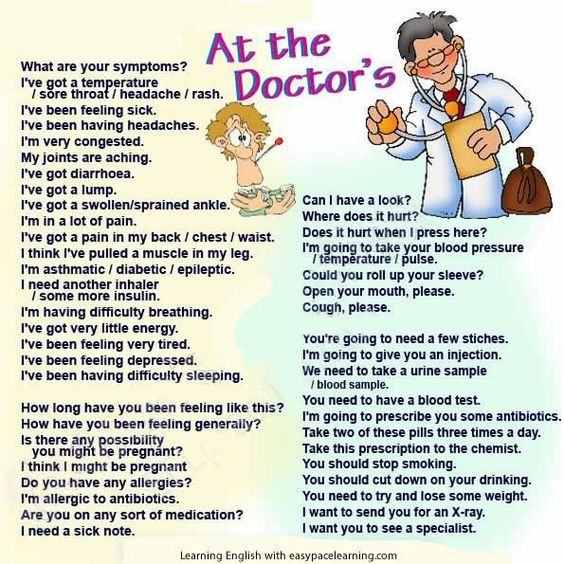 4°F or higher PLUS any of these symptoms:
4°F or higher PLUS any of these symptoms:

 You know your child better than anyone. Call if you are worried.
You know your child better than anyone. Call if you are worried. 8°C)
8°C)